
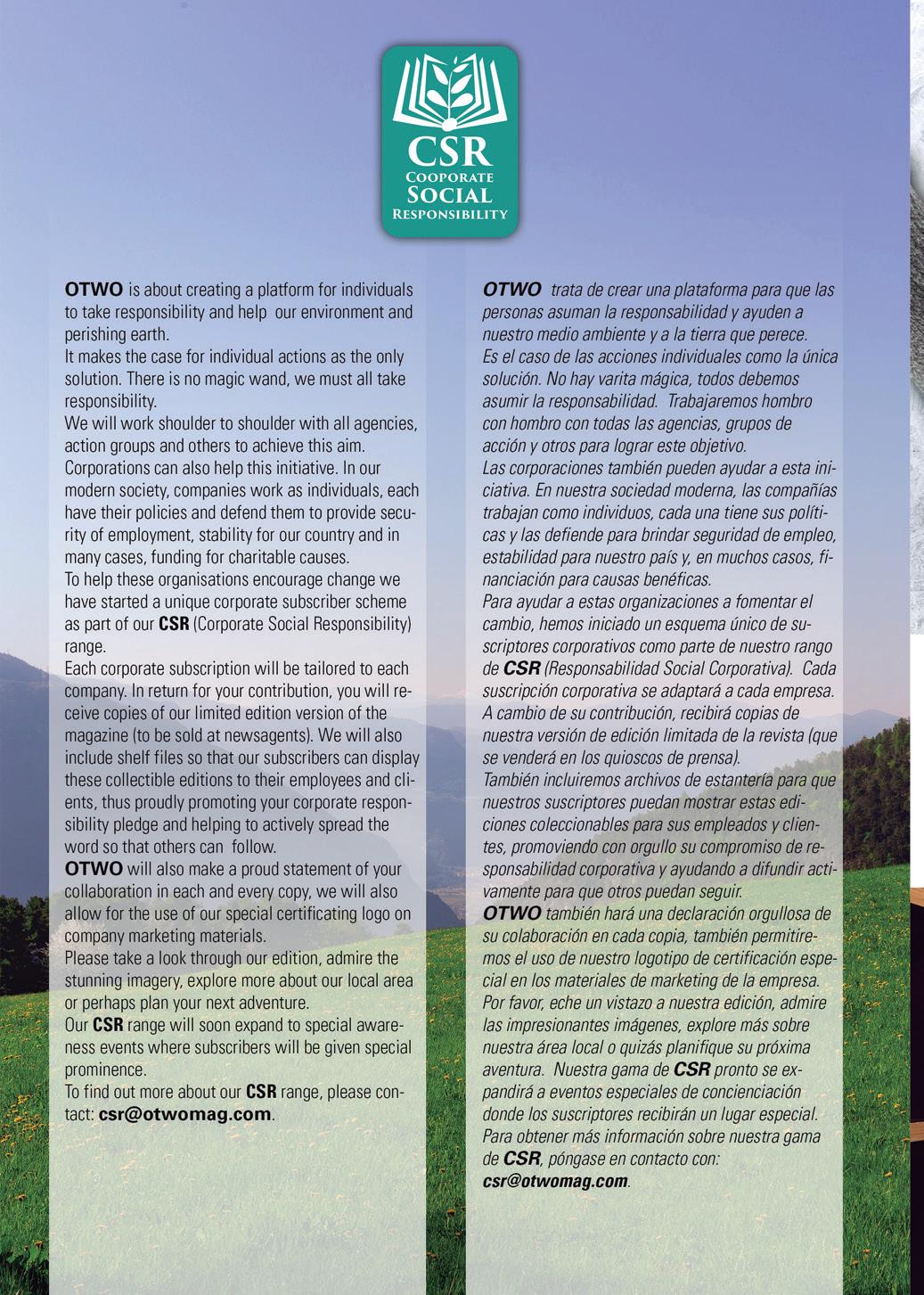


“Solitude is a beautiful thing when you have someone to talk about it with.”. (Gustavo Adolfo Bécquer).
“La soledad es muy hermosa... cuando se tiene alguien a quien decírselo”. (Gustavo Adolfo Bécquer).
PHOTOGRAPHY: PEXELS.COM
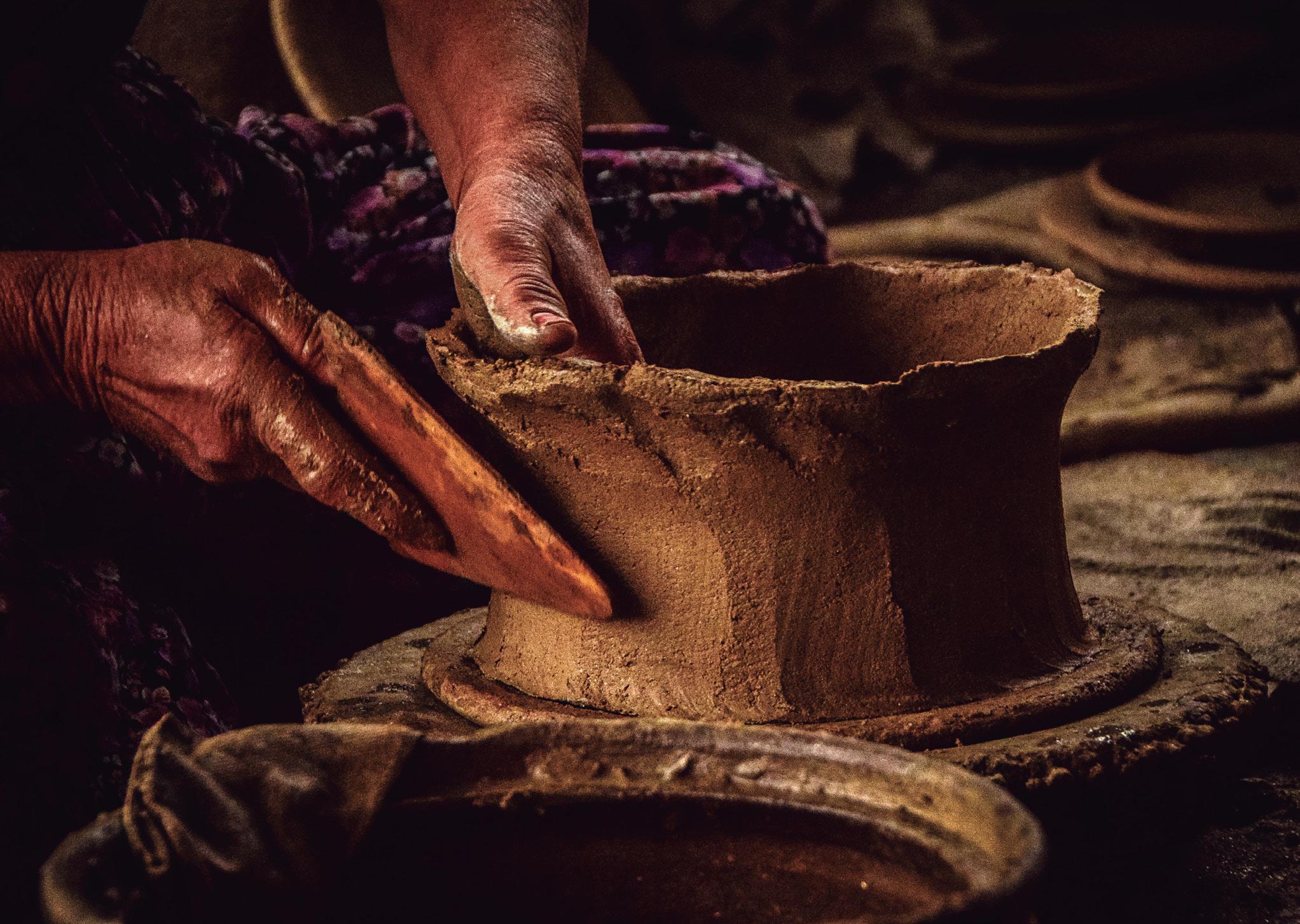
“What gives a cup of clay its value is the empty space between its walls”
(Lao-tsé .
“Lo que le da su valor a una taza de barro es el espacio vacío que hay entre sus paredes”.
(Lao-tsé).
PHOTOGRAPHY: PEXELS.COM
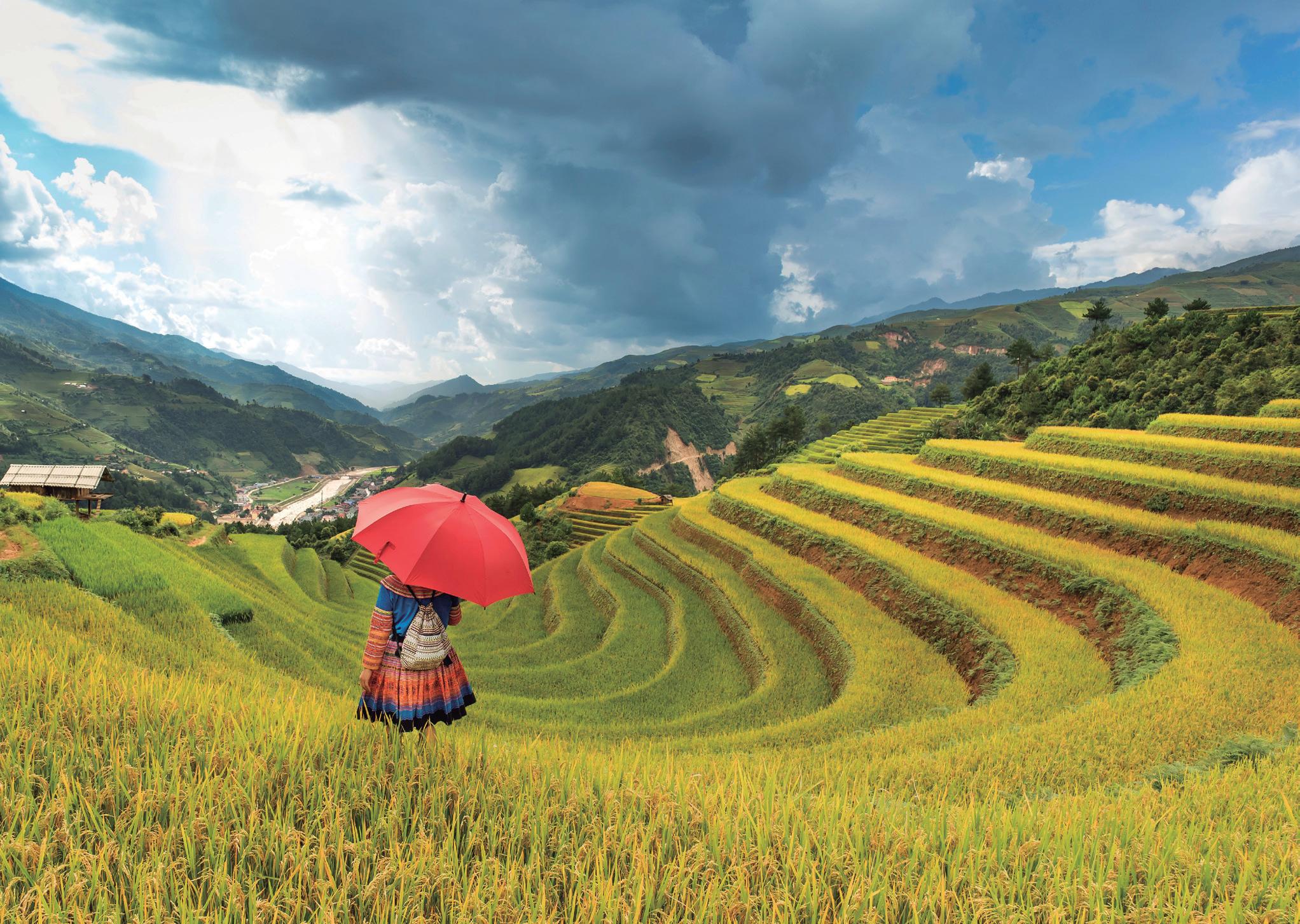
“We all live under the same sky, but we don’t all have the same horizon”
(Konrad Adenauer).
“Vivimos bajo el mismo techo, pero ninguno tenemos el mismo horizonte”.
(Konrad Adenauer).
PHOTOGRAPHY: PEXELS.COM

This volume was published in April 2020 by Oxygene Ltd. OTWO Issue 9
Oxygene Ltd.Business Centre. 19 George´s Lane. GX11 1AA, Gibraltar Tel. +00350 54080331
www.oxygenecommunications.com
© Publishing: Oxygene Ltd.
Vanessa Byrne Managing Director
Juanjo Trujillo Creative Director
Sarah Birch Columnist

Ana Villalta Sales Representative
Photographer: Keith Bensusan, Antonio Luna, Ana Villalta, Pete Jackson, Nicolás Ruíz, Juan Luis González, Pexels.
Cover photo: Sachin C. Nair.
Back Cover photo: Aron Visuals.
Translation: Sarah Birch, Ana Villata and Merlin Gutherless.
Printing:
Santa Teresa Industrias Graficas SA
All rights reserved. No part of this publication may be reproduced, stored in a retrieval system or transmitted in any form or by any means, electronic, mechanical, photocopying, recording or otherwise, without the prior permission in writing from the publishers.
All rights reserved.


Editorial Collection “The flower of the month”.
Colección “La flor del mes”.
Shorts / Cortos.
The Natural Swap. El Cambio Natural.
Eco Passion.

Cadiz, much more than beaches. Cádiz, mucho más que playas.
The Dragon Tree of Villa San Juan. El drago de Villa San Juan.
Lower St Michael’s Cave. La cueva baja de San Miguel.
Nicolás Ruíz de la Corte, Espintapájaros.
Narrowing the Strait Estrechando el Estrecho
Quick Guide to Portugal. Guía Rápida de Portugal.
Experience Catalog


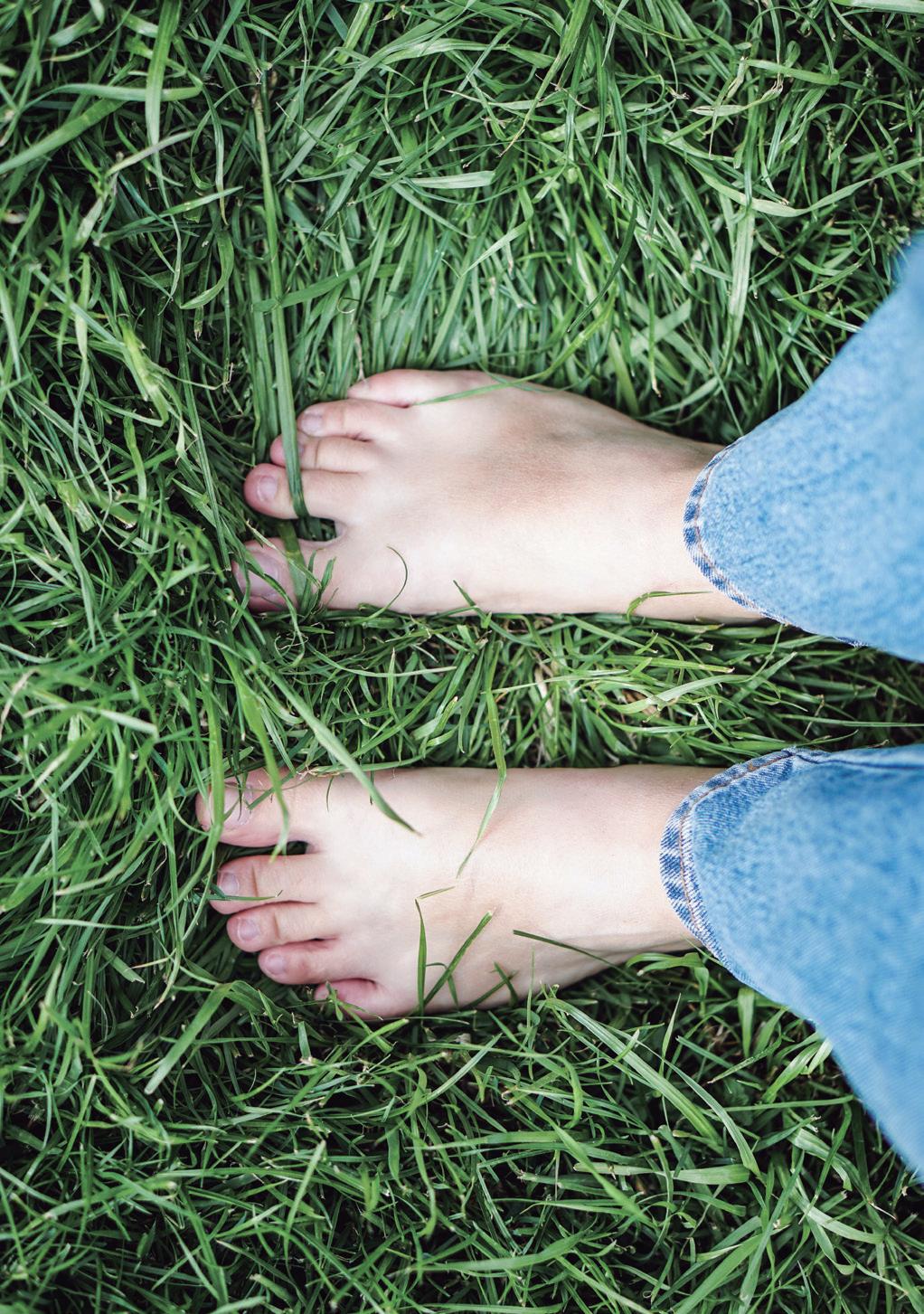
OTWO 9
2020 001 10 90 80 72 62 48 40 26 22 20 14 12 Manuel Campos 95
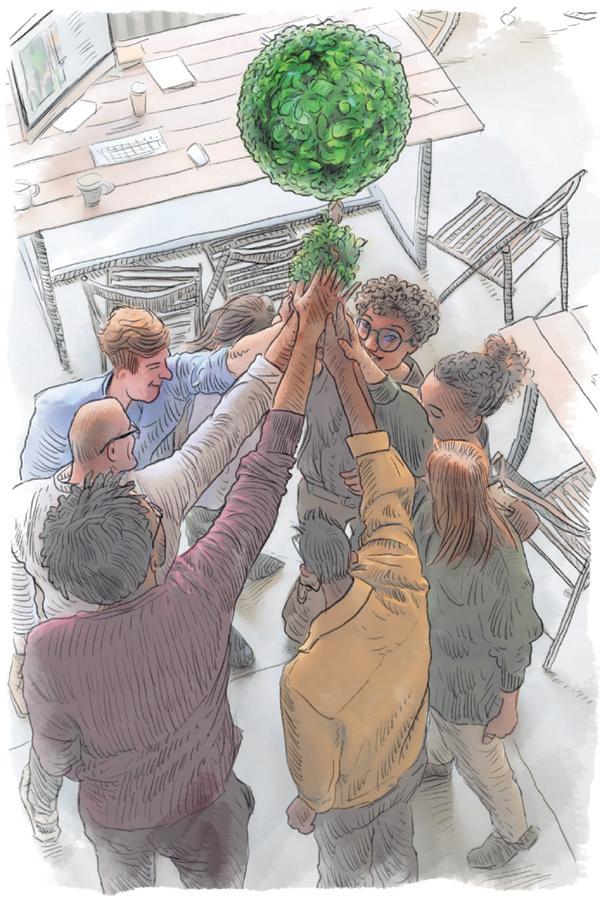
Happy Easter Everyone!
¡Feliz Pascua a todos!
Vanessa Byrne / Managing Director
Last month has seen our very first community survey. The feedback online has been incredible with over 150 completed questionnaires in the first 5 days. I cannot wait to share the results with you. You guys might think this survey as a bit “out of the blue” but we were very curious to see what the public wanted regarding infrastructure for transport - how you feel about cycling and IF we are all indeed ready and waiting for change.
El mes pasado hemos visto nuestra primera encuesta comunitaria. Los comentarios en las redes sociales han sido increíbles con más de 150 cuestionarios completados en los primeros 5 días. No puedo esperar para compartir los resultados con usted. Ustedes podrían pensar que esta encuesta es un poco “inesperada”, pero teníamos gran curiosidad por ver qué quería el público con respecto a la infraestructura para el transporte: cómo se siente con
As you all probably know my family have recently invested in the purchase of our very own e-bikes and have been amazed on how it has changed our lifestyle for the better. Although there are loads of improvements still to be come locally like easier paths and calmer roads, I have noticed such a change in my personal mood.
A total switch from being a road ranging, stressed out mummy driver (Cruela DeVil’s face comes to mind whilst writing this) to cycling to and from town without a care in the world.
Knowing that I won’t have to endlessly look for parking or get to Midtown Car Park quick by a certain time to find a parking at the other end, is so so relaxing.
Now I just cycle along the road, letting the rush go past, as I know I will find a parking in town. There will always be a place to lock your bicycle. Not to mention the sense of freedom it gives you and the spare time you generate by not wasting time parking or just stuck in the metal snake… I wish I could say breathing fresh air but….…
When you are lucky enough to avoid peak hours, what am immediate difference it makes to get a breeze of fresh air every now and again, if only… We will be launching a face to face survey poll soon, obviously when our current problems are over. We have an amazing competition for those who complete it with us. We know how busy life can get so because we would be stealing 5 mins of your time we thought it only fair to give you something in return.

We continue to work on the organization of Green Week Gibraltar. Unfortunately, due to the current issues we might have to delay it from Spring to Autumn but it will happen and will be one to remember. We will have brighter days ahead and of this I have no doubt. x
Watch out for more info on all of our projects on our Facebook and Instagram.
Peace & love and oh! lots of chocolate, Happy Easter once again.
Stay safe.
respecto al ciclismo y si verdeaderamente estamos realmente listos y esperando el cambio.
Como probablemente todos saben, mi familia ha invertido recientemente en la compra de nuestras propias bicicletas eléctricas y estamos sorprendido cómo ha cambiado nuestro estilo de vida para mejor. Aunque todavía hay muchas mejoras por venir localmente, como caminos más fáciles y caminos más tranquilos, he notado un cambio en mi estado de ánimo personal. Un cambio total de ser una mama conductora, estresada y con poco humor (se me viene a la mente la cara de Cruela DeVil mientras escribía esto) a ir en bicicleta hacia y desde la ciudad sin ninguna preocupacion. Sabiendo que no tendré que buscar sin parar un estacionamiento o llegar rápidamente al Midtown Car Park para encontrar un espacio, es muy muy relajante. Ahora solo voy en bici por el camino, dejando pasar la prisa, ya que sé que encontraré un estacionamiento en la ciudad. Siempre habrá un lugar para aparcar su bicicleta.
Sin mencionar la sensación de libertad que te brinda y el tiempo libre que generas al no perder el tiempo estacionando o simplemente atrapada en la serpiente de metal. Ojalá pudiera decir que respiramos aire fresco pero ...
Cuando tienes la suerte de evitar las horas pico, la diferencia es inmediata y supone obtener una brisa de aire fresco de vez en cuando, de imaginar como podria ser ... Pronto lanzaremos una encuesta cara a cara, obviamente cuando nuestros problemas actuales hayan terminado. Tenemos un concurso increíble para quienes la completan con nosotros. Sabemos lo ocupada que puede ser la vida, como estaríamos robando 5 minutos de su tiempo, pensamos que era justo darle algo a cambio.

Continuamos trabajando en la organización de nuestro Semana Verde Gibraltar. Desafortunadamente, debido a los problemas actuales, es posible que tengamos que retrasarlo de primavera a otoño, pero sucederá y será algo para recordar. Tendremos días más brillantes por delante y de esto no tengo dudas. X
Para más información sobre todos nuestros proyectos echa un vistazo nuestro Facebook y Instagram. Paz y amor y ¡oh! mucho chocolate, feliz Pascua una vez más.
ILLUSTRATION:
10 11 OTWO 09 / APRIL 2020 OTWO 09 / APRIL 2020
JUANJO TRUJILLO


APRIL / Abril
Gibraltar Candytuft
Gibraltar’s rich flora numbers some 670 species growing wild on the Rock. This includes some species that are endemic to Gibraltar (i.e., they are found nowhere else in the world) and others that are shared between the Rock and the Rif Mountains in North Africa. The Gibraltar Candytuft grows in Gibraltar, northern Morocco and a limestone outcrop in Ceuta, but it is most common in Gibraltar, where it is a frequent denizen of rocky habitats. Distinctive splashes of white, pink and lilac decorate the north face of the Rock during its flowering season of March and April. It appears to be very rare in Morocco, possibly as a result of habitat degradation due to overgrazing by goats and sheep. Although it is not endemic to Gibraltar, it is perhaps the best known among Gibraltar’s special plants. This is not surprising, as the flowers are extremely attractive, making this a species that is well suited to horticulture. Indeed, its flowers are larger and more showy than other candytufts that are used in gardening. The Gibraltar Botanic Gardens first introduced this species into horticulture using seeds collected in the wild. It makes a wonderful garden plant with tough, green leaves and stunning flowers. It is used widely in the Alameda
La rica flora gibraltareña acumula en torno a 670 especies que crecen en estado silvestre en el Peñón. Ello incluye ejemplares endémicos (no existen en ninguna otra parte del mundo) y otros compartidos entre el Peñón y las cordilleras norteafricanas del Rif. La Gibraltar Candytuft crece en Gibraltar, el norte de Marruecos y una zona de roca caliza en Ceuta, pero se encuentra principalmente en Gibraltar, siendo una especie de hábitats rocosos. Estampas distintivas de blancos, rosas y lilas decoran la cara norte del Peñón durante su florecimiento en marzo y abril. Es una especie inusual en Marruecos, probablemente a causa del empobrecimiento del hábitat por el abuso de ganado lanar y caprino. Aun no siendo una especie endémica, quizás constituye la más conocida de las plantas especiales de Gibraltar. Ello no sorprende al ser las flores enormemente llamativas y apropiadas para la horticultura. Desde luego, sus flores tienen mayor tamaño y son más atractivas que otras de la misma familia. Los Jardines Botánicos de Gibraltar introdujeron esta especie en la horticultura después de usar las semillas recolectadas en el entorno silvestre. Constituye una magnífica planta de jardín por sus poderosas y verdes hojas e impresionantes flores. Abundan con profusión en los Jardines de la Alameda.
Dr Keith Bensusan Director
Gibraltar Botanic Gardens, The Alameda.
Collection “The flower of the month”
Iberis gibraltarica
12 13
Photography: Keith Bensusan
OTWO 09 / APRIL 2020
Iberis gibraltarica


Europe has just experienced its hottest winter on record, while across the globe February 2020 was the second warmest February ever recorded.
According to scientists from the EU’s Copernicus Climate Change Service, temperatures were 1.4C above the previous record-breaking winter of 201516 and 3.4C warmer than the average from 19812010.
The effects of these increasing temperatures have resulted in very little snow fall across the continent, with many ski resorts and their surrounding towns suffering an economic downturn due to the lack of tourism. One of the oldest ski resorts in France – Le Mont-Dore, went into administration in early March, blaming climate change for the lack of snow which forced them to close the majority of pistes resulting in massive losses.
In Germany, winter agriculture was also impacted. “Ice-wine” harvests (a local delicacy made from grapes harvested when they are frozen) failed for the first time ever.
The recent severe and widespread flooding across the UK has also been attributed to the unseasonably
high temperatures, with three consecutive storms hitting the British Isles in the space of two weeks.
The climate service also wrote on their website that “Considerably above-average temperatures were not confined to Europe but extended over most of Russia. Other regions that were quite substantially warmer than average include north-western Africa, Iran, Afghanistan and Central Asia, and much of China, with smaller pockets in North and South America, central and southern Africa and Western Australia.”
Across the entire globe, last year was the second warmest year on record after 2016 and global sea temperatures were the highest since records began.
El invierno más cálido registrado jamás en Europa
Europa acaba de vivir el invierno más caluroso de los que constan registros, mientras febrero de 2020 ha sido el más cálido registrado jamás a nivel mundial.
Según científicos del Servicio Europeo de Cambio Climático Copérnico, las temperaturas han sido
1.4ºC por encima del último invierno de récord en 2015-16, y 3.4ºC más cálido que la media entre 1981-2010.
Los efectos de estas crecientes temperaturas, han dado lugar a que disminuya la nieve caída en todo el continente, con muchas estaciones de esquí y sus ciudades circundantes, sufriendo una recesión económica debido a la falta de turismo. Una de las estaciones de esquí más antiguas de Francia – Le Mont-Dore, declaró su insolvencia a principios de marzo, culpando al cambio climático de la falta de nieve que les obligó a cerrar la mayoría de las pistas, generando pérdidas masivas.
En Alemania, también se ha visto afectada la agricultura de invierno. Las cosechas de “vino de hielo” -un manjar local elaborado a partir de uvas cosechadas cuando se congelan- han faltado por primera vez en la historia.
Las severas y generalizadas inundaciones recientes en todo el Reino Unido también, también han sido atribuidas a las temperaturas inestacionalmente altas, con tres tormentas consecutivas que golpearon las Islas Británicas en el espacio de dos semanas.
El servicio climático también ha informado en su web que, “las temperaturas considerablemente por encima de la media, no se limitaban a Europa, sino que se extendían sobre la mayor parte de Rusia. Otras regiones que han sufrido temperaturas sustancialmente más cálidas que el promedio incluye al noroeste de África, Irán, Afganistán y Asia Central y gran parte de China, con focos más pequeños en América del Norte y del Sur, además del centro y el sur de Africa y Australia Occidental”.
En todo el mundo, el año pasado ha sido el segundo año más cálido después de 2016 y las temperaturas globales del mar han sido las más altas desde que comenzamos a tener registros.

HEATHROW EXPANSION RULED UNLAWFUL DUE TO CLIMATE CHANGE
Heathrow Airports plans for a third runway have been ruled illegal on the grounds that such an expansion would contradict the UK governments commitment to tackle climate change.
This landmark decision by the Court of Appeals
is the first of its kind to base its decision on the Paris Climate Agreement, citing that plans for the airports’ expansion did not take the UK’s environmental targets into account, therefore going against the countries pledge to cut greenhouse gas emissions to reach net-zero by 2050.
The government has stated that they will not appeal the court’s decision, however Heathrow airport will challenge the ruling at the supreme court.
The environmental group Friend of the Earth, called the ruling “an absolutely ground-breaking result for climate justice.”
Legal charity Plan B, who brought the case to the courts said, “It’s now clear that our governments can’t keep claiming commitment to the Paris agreement, while simultaneously taking actions that blatantly contradict it”.
This landmark ruling does not necessarily mean that the new runway will not eventually be built. If plans are modified and can prove that an expansion is compatible with the UK’s environmental commitments under the Paris agreement it may still go ahead.

Debido al cambio climático, declarada ilegal la expansión de Heathrow
Los planes de Heathrow Airports para una tercera pista han sido declarados ilegales con el argumento de que tal expansión, contravendría el compromiso de los gobiernos del Reino Unido de hacer frente al cambio climático.
Esta decisión histórica del Tribunal de Apelaciones, es la primera de este tipo en basar su decisión en el Acuerdo Climático de París, citando que los planes para la expansión de los aeropuertos, no
15 14
OTWO 09 / APRIL 2020 OTWO 09 / APRIL 2020
EUROPE’S WARMEST WINTER ON RECORD
tenían en cuenta los objetivos medioambientales del Reino Unido de reducir las emisiones de gases de efecto invernadero, para llegar a cero neto en 2050.
El gobierno ha declarado que no apelará la decisión del tribunal, mientras el aeropuerto de Heathrow, si impugnará el fallo de la Corte Suprema.
El grupo ecologista Amigo de la Tierra ha calificado el fallo como, “un resultado absolutamente innovador para la justicia climática”.
La organización Plan B, que llevó el caso a los tribunales ha manifestado, “ahora está claro que nuestros gobiernos no pueden seguir reclamando compromisos con el acuerdo de París, al mismo tiempo que toman medidas que lo contradicen descaradamente”.
Este fallo histórico no significa necesariamente que la nueva pista finalmente no se construya. Si se modifican los planes, y se puede demostrar que una expansión es compatible con los compromisos medioambientales del Reino Unido en el marco del acuerdo de París, todavía puede seguir adelante.
Sin embargo, la importancia de la decisión del tribunal de detener la expansión del aeropuerto argumentando su decisión en el cambio climático, podría establecer un precedente, e influir en los desafíos futuros contra proyectos similares tanto en el Reino Unido, como en todo el mundo. Y, con la crisis climática a la vanguardia de la preocupación pública, podría garantizar que el acuerdo de París desempeñe un papel central en la formulación de políticas futuras.

REVOLUTIONARY DEVICE CREATES ELECTRICITY ‘OUT OF THIN AIR’
A team of scientists and electrical engineers at the University of Massachusetts Amherst have developed a unique device that creates electricity from moisture in the air.
The device, which has been named the ‘Air-Gen’ or air-powered generator, works by using electricity conducting protein nanowires produced by a microbe called Geobacter.
The Air Gen is comprised of a 7 mm thin film of nanowire connected to two electrodes. When exposed to the air around us it draws water vapour from the 16
atmosphere causing a natural reaction that generates a continuous electrical current between the two electrodes.
“We are literally making electricity out of thin air” says electrical engineer Jun Yao. “The Air-gen generates clean energy 24/7.”
Microbiologist Derek Lovley, who discovered the Geobacter microbe in the mud of the Potomac River back in the 1980’s, also said that “It’s the most amazing and exciting application of protein nanowires yet.”
This new technology could potentially have significant implications for the future of renewable energy production and for climate change.
The Air-Gen produces completely clean and renewable energy at a low cost and can generate power even in areas with extremely low humidity. Unlike solar or wind energy the Air Gen does not require sunlight or wind to produce power and can even work indoors, giving the device a significant advantage over other forms of renewable energy.
Currently, the Air-gen can power small electronic devices, but Yao says that “The ultimate goal is to make large-scale systems.” The technology could potentially power homes by integrating nanowires into wall paint and become a major contributor to sustainable energy production.
Un revolucionario dispositivo que genera electricidad “de la nada”
Un equipo de científicos e ingenieros eléctricos de la Universidad de Massachusetts Amherst, ha desarrollado un dispositivo único que crea electricidad a partir de la humedad en el aire.
El dispositivo, que ha sido nombrado ‘Air-Gen’ o generador accionado por aire, funciona mediante el uso de nanohilos de proteína conductoras de electricidad, producidos por un microrganismo llamado Geobacter.
El Air Gen, se compone de una película delgada de 7 mm de nanohilos conectado a dos electrodos. Cuando se expone al aire que nos rodea, extrae vapor de agua de la atmósfera, causando una reacción natural que genera una corriente eléctrica continua entre los dos electrodos.
“Literalmente estamos haciendo electricidad de la nada”, afirma el ingeniero eléctrico Jun Yao. “El Airgen genera energía limpia 24/7”.

17
OTWO 09 / APRIL 2020 OTWO 09 / APRIL 2020

El microbiólogo Derek Lovley, quien descubrió el microorganismo Geobacter en el lodo del río Potomac en la década de 1980, también ha dicho que, “es la aplicación más increíble y emocionante de nanohilos proteicos hasta la fecha”.
Esta nueva tecnología podría tener implicaciones significativas para el futuro de la producción de energía renovable y para el cambio climático.
El Air-Gen produce energía completamente limpia y renovable a un bajo costo y puede generar energía incluso en áreas con humedad extremadamente baja. A diferencia de la energía solar o eólica, air Gen no requiere luz solar ni viento para producir energía e incluso, puede trabajar en interiores, lo que le da al dispositivo una ventaja significativa sobre otras formas de energía renovable.
Actualmente, el Air-gen puede alimentar pequeños dispositivos electrónicos, pero Yao dice que, “el objetivo final es hacer sistemas a gran escala”. La tecnología podría potencialmente alimentar hogares mediante la integración de nanohilos en la pintura de pared y convertirse en un importante contribuyente a la producción de energía sostenible.

TOWN CYCLE LANES SUSPENDED
Main street and Irish town cycle lanes were suspended at the end March, just 20 months after the pilot scheme was launched.
The scheme, which started in August 2018, allowed cyclists to cycle southbound along Main Street and northbound along Irish Town during designated hours of the day. Cyclists were permitted to use the convenient and traffic free route on weekdays from 7pm to 9.15am and on weekends between 5pm and 9:15am.
The Ministry for Business, Tourism and Transport announced that the decision to suspend the routes were made following the advice from the Office of the Transport Planner which considered feedback from local enforcement authorities, NGO’s and technical officials.
After monitoring the scheme, a statement from the Government concluded: “In considering the volume of pedestrians in the area it would not be viable to extend the hours of use. Furthermore, after having considered the limited use over the actual operational hours, this pilot initiative will be suspended as from 31 March
2020.” It was also cited that frequent offenders used the routes during unpermitted day time hours.
Pedestrian safety in an ever-busier town area is paramount, but with an urgent need for greener transport alternatives, segregated cycle lane infrastructure is a must to encourage more people to use bicycles. Here at OTWO we hope that the current government seriously consider and commits to providing safe cycle lanes to make Gibraltar a greener, cleaner and safer place.
Carriles bici
urbanos suspendidos
La calle principal y los carriles bici de Irish town fueron suspendidos a finales de marzo, sólo 20 meses después del lanzamiento del proyecto piloto.
El esquema, que comenzó en agosto de 2018, permitió a los ciclistas para ir en dirección sur a lo largo de Main Street y hacia el norte a lo largo de Irish town, durante las horas diarias designadas. A los ciclistas se les permitía utilizar la ruta trazada y libre de tráfico, de lunes a viernes de 7pm a 9.15am y los fines de semana, entre las 5pm y las 9:15am.
El Ministerio de Empresa, Turismo y Transporte, anunció que la decisión de suspender las rutas se ha tomado siguiendo el asesoramiento de la Oficina del Planificador de Transportes, que examinó los comentarios de las autoridades locales encargadas de hacer cumplir la ley, las ONG y los funcionarios técnicos. Después de supervisar el plan, el informe del Gobierno concluye, “considerando el volumen de peatones en la zona, no sería viable ampliar las horas de uso. Además, después de haber considerado el uso limitado durante las horas operativas reales, esta iniciativa piloto se suspenderá a partir del 31 de marzo de 2020”. También se argumentó que los delincuentes utilizaban con frecuencia las rutas durante las horas no permitidas.
La seguridad de los peatones en una zona de la ciudad cada vez más transitada es primordial, pero con una necesidad urgente de alternativas de transporte más ecológicas, la infraestructura de ciclovías segregadas, es una necesidad para alentar a más personas a utilizar la bici. Aquí en OTWO, esperamos que el gobierno actual considere de forma seria esta cuestión y se comprometa a proporcionar carriles bici seguros para hacer de Gibraltar un lugar más ecológico, más limpio y más seguro.
18 19
OTWO 09 / APRIL 2020 OTWO 09 / APRIL 2020
The Natural Swap
El Cambio Natural
Bathroom- Aerosol Spray Cans. Recyclable? Yes (must be emptied).
How long does it take to decompose:
80 - 100 Years.
Alternatives:
Natural Deodorant. Roll on Stick. Natural furniture polish – Use cooking oil or olive oil (add scented oils for fragrance) . Hand supplied Sun Creams.
Kitchen- Paper Towels and Napkins.
Recyclable? No.
How long does it take to decompose: 2/4 weeks.
Fun Fact: An estimated 1.5/2 rolls of paper towels are used per week per family of four.
Alternatives:
Cotton napkins. Sponge for cleaning surfaces. Linen or Cotton bowl covers. Reusable wipes.
Home – Fabric Softener bottles.
Recyclable? Only some.
How long does it take to decompose? 450 years.
Alternatives:
Wool Dryer Balls. Baking Soda. Essential oils. Epsom Salt with Baking Soda.
Lifestyle – Single use produce plastic bags –Recyclable?: Some are yes.
How long does it take to decompose: Up to 1000 years.
Alternatives:
Reusable mesh produce bags.
Reusable cotton produce bags. Large silicone bags.

Baño: Latas de aerosol.
¿Reciclable? Sí (debe vaciarse antes).
¿Cuánto tiempo tardan en descomponerse?
80 - 100 años.
Alternativas:
Desodorante natural. Roll on. Cera para muebles natural: use aceite de cocina o aceite de oliva (añades aceites perfumados para la fragancia).
Cremas solares suministradas a mano
Cocina: Toallas de papel y servilletas.
¿Reciclable? No.
¿Cuánto tiempo tardan en descomponerse?
2/4 Semanas.
Dato curioso: Se estima que se usan 1.5/2 rollos de toallas de papel por semana por familia de cuatro.
Alternativas:
Servilletas de algodón. Esponja para limpiar superficies. Tapas de algodón. Toallitas reutilizables
Casa : Botellas suavizantes.
¿Reciclable? Algunos.
¿Cuánto tiempo tardan en descomponerse? 450 años.
Alternativas:
Bolas de secadora de lana. Bicarbonato de sodio. Aceites esenciales. Sal de Epsom con bicarbonato de sodio.
Estilo de vida: Bolsas de plástico de un solo uso para verduras y frutas.
¿Reciclable? Algunos son si.
¿Cuánto tiempo tardan en descomponerse?
Hasta 1.000 años.
Alternativas:
Bolsas de malla reutilizables. Bolsas de algodón reutilizables. Bolsas grandes de silicona. Cuero vegano.

PHOTOGRAPHY: PEXELS.COM
20 OTWO 09 / APRIL 2020


Cotton Bags
Bolsas de algodon organico

There are many ways to reduce the plastic and unnecessary waste in our lives. One way is to quit the use of small plastic bags from supermarkets or food stores. We all know the importance of eating plenty of fresh fruit and vegetables, but how can we do it with less plastic and less waste? Look for loose fruit and veg only and say no to the plastic bags.
Our packs of 5 lightweight but strong organic cotton reusable bags are perfect for weighing dry good or loose fruit and veg in all types of shops. You can also use them for bread and for storage of goods at home, or even to take your lunch to work or school.
They are made in India and packed in France by a carbon-neutral company and will enable you to avoid more plastic wrapping and plastic bags in your daily life.
They measure 30x33cm and can hold up to 2.5kg in weight, they have a drawstring in different colours. They are also machine washable at 30 degrees.
Order online to go one step further for an eco-friendly lifestyle www.ecopassion.es.
Existen muchas maneras de reducir el uso innecesario de residuo plástico. Una de ellas consiste en eliminar el uso de bolsas pequeñas de supermercados y tiendas de alimentación. Todos estamos al tanto de la importancia de consumir suficiente fruta y verdura, pero ¿cómo hacerlo usando menos bolsas? Seleccionemos únicamente fruta y verdura suelta y digamos no a las bolsas de plástico.
Nuestros packs de cinco bolsas de algodón orgánico, ligero pero reutilizable, son perfectas para comprar fruta y verdura en cualquier tipo de tienda.
Pueden usarse asimismo para el pan o almacenamiento de productos en casa e incluso para llevar el almuerzo al trabajo o el colegio.
Se fabrican en India y empaquetan en Francia por una empresa libre de carbon y le permitirá evitar envasar en plástico en su día a día.
Con un tamaño de 30x33cm y la capacidad de soportar hasta 2,5 kilos de peso, vienen en una diferente gama de colores. Son asimismo lavables a 30 grados de temperatura.
Pídalas online para avanzar así un paso más hacia un estilo de vida ecológico www.ecopassion.es.
22 23 OTWO 09 / APRIL 2020 OTWO 09 / APRIL 2020

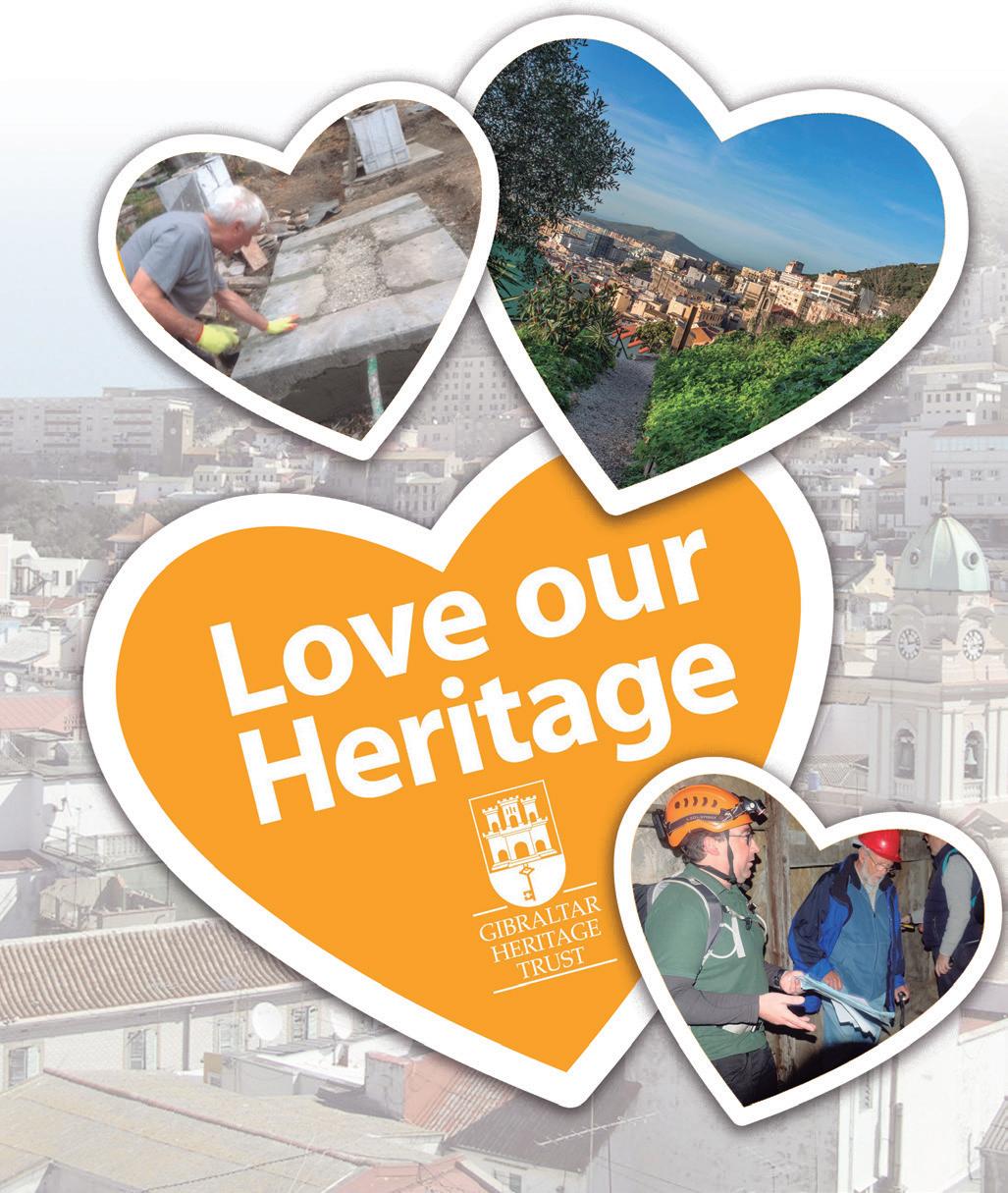
By investing in the Trust you are Investing in Gibraltar’s past, its present and its future
When you take out an annual membership, you support Gibraltar and the work that the Trust does to protect and enhance it however, your membership also entitles you to:
• Access to the Trust’s monthly programme of events, including trips and organized excursions.
• Access, by appointment, to the Trust’s reference library of books related to Gibraltar and its past (The Trust is accepting donations of books on Gibraltar to add to this resource).
• Free entry to the Gibraltar Museum.
• Free entry to the Upper Rock Nature Reserve, St Michael’s Cave, Great Siege Tunnels, Military Heritage Centre, Tower of Homage, Ape’s Den, Windsor Suspension Bridge and WWII Tunnels.
HAZTE MIEMBRO HOY
Si colabora por el Patrimonio, usted está invirtiendo en el pasado de Gibraltar, su presente y su futuro.
Siendo miembro durante un año, apoya a Gibraltar y el trabajo que Patrimonio hace para protegerlo y mejorarlo. Además, también le da derecho a:
• Acceso al programa mensual de eventos, incluidos viajes y excursiones organizadas.
• Acceder, con cita previa, a la biblioteca para consultar los libros relacionados con Gibraltar y su pasado (nuestro fondo bibliográfico crece día a día gracias a las donaciones que recibimos).
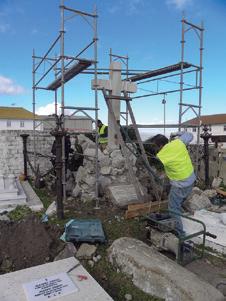
• Annual Report, our regular e-newsletter direct to your inbox, updates and information on what’s happening on the Gibraltar heritage scene.
• Free Cable Car Travel from 1st September 2019 to 31st March, 2020 (not to be used before 4pm until 1st November 2019).
• Discounts at the Gibraltar Heritage Trust Shop on our own publications.
• 10% Discount when purchasing 500g of coffee beans from Sacarello’s Coffee Shop Visit our Website www.gibraltarheritagetrust. org.gi and click on the JOIN US button.
• Entrada gratuita al Museo de Gibraltar.
• Entrada gratuita a la Reserva Natural de Upper Rock, a la Cueva de San Miguel, a los túneles del Gran Asedio, al Centro del Patrimonio Militar, a la Torre del Homenaje, a la Guarida de los Monos, al Puente Colgante de Windsor y a los Túneles de la Segunda Guerra Mundial.
• También recibirá el Informe Anual y nuestro boletín electrónico enviado regularmente por correo electrónico, actualizaciones e información sobre lo que está sucediendo en la escena del patrimonio de Gibraltar.
• Viaje gratuito en el teleférico desde el 1 de septiembre de 2019 hasta el 31 de marzo de 2020 (no se utilizará antes de las 4 de la tarde hasta el 1 de noviembre de 2019).
• Descuentos de nuestras publicaciones en la tienda Gibraltar Heritage.
• 10% de descuento en la compra de 500 g de granos de café en la cafetería de Sacarello´s Coffee Shop.
Visite nuestro sitio web: www.gibraltarheritagetrust.org.gi y haga clic en el botón JOIN US.
OTWO 09 / APRIL 2020 25

Cadiz, much more than beaches
Cádiz, mucho más que playas
Antonio Luna del Barco Andalusian Environment and Water Agency
The province of Cádiz is a strong tourist destination with a growing demand - more than 5 million tourists visited in 2019 - linked mainly to coastal tourism. Due to this demand, the amount of accommodation on offer in the area has grown as well as other tourist services, with their quality also increasing. So much so, that, as reflected in the Andalusian Tourist Situation Survey, Cadiz’s variety of beaches are the feature best valued by visitors to the region’s coastal areas.
However, this high demand for sun and beach tourism is also placing a high amount of pressure on the territory, with tourist resources and infrastructure showing increasingly clear signs of saturation. The environmental impact of this mounting pressure is measured by indicators such as land use, disappearance of coastal habitats, water demand, wastewater purification capacity and waste management, energy consumption, motorised mobility... Even with the resident population historically showing serious shortcomings in coastal areas when it comes to the above environmental issues, the increasingly growing number of visitors makes
maintaining environmental indicators unfeasible within the limits of sustainability.
Likewise, the pressure of tourism on some coastal areas of the province are beginning to highlight the social impact of this high demand, such as increased difficulty to access housing, a strain on public services, a reduction in environmental standards in urban areas such as noise and inconvenience to neighbours, overcrowding of public spaces due to tourists, or the disappearance of traditional economic activities.
On the other hand, just like other destinations dominated by coastal tourism, the province of Cádiz is highly seasonal, with demand mainly concentrated during the summer. If during the month of August overnight stays exceed 1.2 million, in January they do not reach 180,000 - 7 times less than the summer months. As a result, a large part of accommodation infrastructure (primarily housing) remains empty or underused for a large part of the year. This happens to occur in just one area, on the coast, which due to its fragility, makes maximizing efficiency and minimizing the impact of those inhabiting the area a top priority.
OTWO 09 / APRIL 2020 27
An exceptional destination for nature tourism
But the province of Cádiz is much more than beaches. It possesses exceptional qualities for nature tourism, with the main incentive’s for visiting being observation, appreciation, enjoyment and contact with nature and the culture linked to it. The province of Cádiz offers a natural heritage of unmatched size and diversity. 34% of its surface (more than 300 thousand hectares) are included in the Natura 2000 European Ecological Network: 43 protected areas, 6 of them Natural Parks, 3 Biosphere Reserves and 6 Ramsar wetlands. This extensive heritage gives rise to a huge diversity of natural environments. From seabed’s to mountain peaks, from pristine beaches and coastal dunes, to holm oak and cork oak forests, from salt marshes to inland wetlands.
It is a natural heritage that is also widely distributed throughout the territory: 39 of the 45 municipalities within the province have at least one protected natural area. If the different landscapes in the province have a common factor, one which connects its different territorial areas (coasts, countryside, mountains ...) lending structure and cohesion to the territory, it’s the network of protected natural spaces. From East to West, from North to South, from the Atlantic to the Mediterranean, the province can be traversed via its protected spaces. For any traveller who journeys through it, nature will be a constant element, a common theme throughout their trip.
This extensive natural wealth is united by a cultural, material and intangible heritage, closely linked to the use of natural resources, allowing a direct and coherent connection between the two. To understand these cultural links the natural resources used in the area’s natural spaces such as cork, pineapple or salt are processes that must also be considered. This offers great potential to help reinforce and complement the areas nature tourism, with activities linked to rural historical heritage and the traditional uses of the provinces’ land (forest tourism, agrotourism, fishing tourism, agricultural industrial tourism ...), thereby highlighting to the visitor the importance of contact with nature.
On the other hand, compared to the limited seasonality of nature tourism in other areas of Europe and the world, and more specifically the areas from which the majority of this tourist segment travel
from, the province of Cádiz has more than three thousand hours of sun a year, more than triple that of northern Europe, together with mild temperatures, tempered both in summer and winter by its proximity to the sea. In other words, a climate that allows nature activities all year round.
But if there is one thing that makes the province of Cádiz unique, is its very location. Few places in the world are so well positioned on the global map – simultaneously the gateway to Africa, Europe, the Atlantic and the Mediterranean, as it has been throughout history. This not only gives the area global fame but also a strong symbolic character. The Straits were, and still are, one of the busiest places in the world, not just for human beings and commercial trade, but also and above all else, for the passage of birds and marine species on their seasonal migratory flows, making the province of Cádiz an exceptional setting and a unique place in the world to observe these natural processes.
A place of constant movement and interchange as well as convergence and merger, reflected in a culture that has resulted from a blend of other cultures throughout history as well as its natural heritage. The location of the province of Cadiz between two seas and two continents has resulted in a convergence of different biogeographical areas and geological process, demonstrated by its high level of biodiversity. Evidence of this is the creation of the Andalusia-Morocco Intercontinental Biosphere Reserve of the Mediterranean, highlighting the importance of this global environmental juncture.
In short, due to its privileged location, its favourable climate, its natural and cultural diversity, its extensive natural spaces and the natural exchange processes it houses, the province of Cádiz boasts exceptional conditions as a nature destination for tourists, together with an ability to offer a great range of activities that are adaptable to each season and to each visitor.
Nature tourism for sustainable development
Nature tourism is an important tool for sustainable local development, while also contributing to the conservation and dissemination of natural and cultural heritage. As this type of tourism is well suited to the area, nature tourism can promote decentralised economic development that is distributed throughout


28 OTWO 09 / APRIL 2020 OTWO 09 / APRIL 2020 29

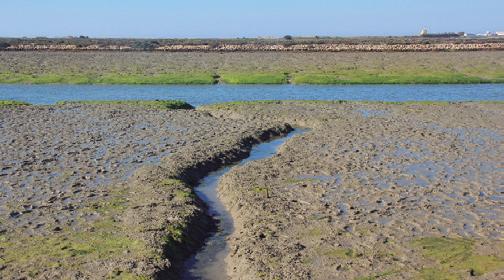
the territory, with a greater impact on the local economy than conventional tourism, especially in rural areas. Broadening the areas that could benefit from tourist activity will create new employment, help to maintain the local population and reduce the territorial imbalances generated by coastal or urban tourism.
The potential of nature tourism for the sustainable development of rural areas is especially relevant in the province of Cádiz, given the areas exceptional natural conditions for this type of tourism. Aware of this potential, the Sustainable Development Plans

of the Natural Parks of the province, acting as the principal instrument of socio-economic revitalisation for the natural parks and surrounding areas, propose among their objectives the creation of a tourist offering based on natural spaces, cultural heritage and traditional practices, allowing for the diversification and reorientation of the provinces popular sun and beach tourism, while ensuring its sustainability and adapting supply and demand to the environment. To do this, two strategic lines are proposed.
On one side, it is intended to promote nature tou-

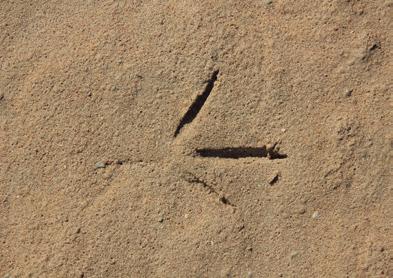
rism as an additional part of mass holiday tourism (mainly coastal and urban) by attracting it to activities in natural areas of the province and proposing them as an enrichment and complementary part of the tourists stay. These will generally be short-term activities, adapted to a non-specialised public and appropriate to seasonal and weather conditions. On the other side, as we have previously seen, the natural areas of the province of Cádiz have the capability of developing a distinctive and independent tourist offering, that is not contingent upon coastal tourism

as the main proportion of the stay. This means envisaging the province of Cádiz as an area that has the capability of becoming a nature tourism destination with national and international significance, attracting visitors whose motivation is specifically to carry out activities in natural areas. Ornithological tourism, nature photography, bicycle touring, hiking great routes or various nature sports are clear areas of nature tourism that are clearly growing and that should be built upon as a discerning characteristic of the province of Cádiz as a tourist destination.
30 OTWO 09 / APRIL 2020 OTWO 09 / APRIL 2020 31

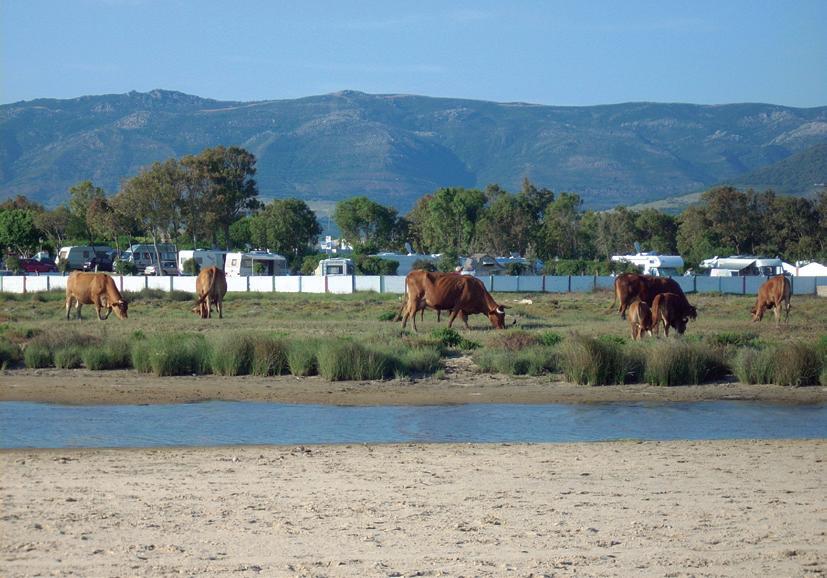


32 OTWO 09 / APRIL 2020 OTWO 09 / APRIL 2020 33
La provincia de Cádiz es un destino turístico consolidado y con una demanda creciente —más de 5 millones de turistas en 2019— vinculada principalmente al turismo litoral. Ha desarrollado una oferta de alojamientos y otros servicios turísticos acorde a esa demanda, con un nivel de calidad también creciente. Tanto es así, que, como refleja la encuesta de Coyuntura Turística de Andalucía, la oferta de las playas gaditanas es la mejor valorada entre los visitantes al litoral de la región.
No obstante, la elevada dependencia del turismo de sol y playa provoca también una elevada presión sobre el territorio y muestra cada vez más claros signos de saturación del recurso turístico y de las infraestructuras. El vector ambiental de esa creciente presión se refleja en indicadores como la ocupación del suelo, la desaparición de hábitats litorales, la demanda de agua, la capacidad de depuración de aguas residuales y de gestión de residuos, el consumo energético, la movilidad motorizada… Si incluso para la población residente, esos aspectos han presentado históricamente serias carencias en la franja litoral, el creciente aumento de la población visitante hace inviable el mantenimiento de los indicadores ambientales dentro de los límites de la sostenibilidad.
Igualmente, la presión turística en algunas zonas del litoral de la provincia empieza a evidenciar impactos sociales tales como el agravamiento de las dificultades de acceso a la vivienda, la saturación de los servicios públicos, la reducción de la calidad ambiental de zonas urbana —ruidos y molestias a vecinos y vecinas, saturación del espacio público por usos turísticos...— o la desaparición de actividades económicas tradicionales.
Por otro lado, al igual que otros destinos dominados por el turismo litoral, la provincia de Cádiz muestra una elevada estacionalidad, con una demanda concentrada principalmente en la época estival. Si en el mes de agosto las pernoctaciones superan 1,2 millones, en enero no alcanzan 180 mil, 7 veces menos. Consecuencia de ello, gran parte de la infraestructura de acogida, principalmente alojativa, se mantiene ociosa o infrautilizada una parte importante del año. Esto se produce además en un ámbito, el litoral, en el que por su fragilidad debería ser prioritario maximizar la eficiencia y minimizar el impacto de cualquier ocupación.
Un destino excepcional para el turismo de naturaleza
Pero la provincia de Cádiz es mucho más que playas. Presenta unas cualidades excepcionales para el turismo de naturaleza, entendido como aquel en el que la principal motivación es la observación, apreciación, disfrute y contacto con la naturaleza y de la cultura vinculada a ella. La provincia de Cádiz ofrece un patrimonio natural de inigualable extensión y diversidad. Un 34% de su superficie, más de 300 mil hectáreas, se encuentra incluida en la Red Ecológica Europea Natura 2000: 43 espacios protegidos, 6 de ellos Parques Naturales, 3 Reservas de la Biosfera y 6 humedales Ramsar. Este extenso patrimonio da lugar a una enorme diversidad de ambientes naturales. Desde fondos marinos a cumbres serranas, desde playas vírgenes y dunas litorales a bosques de encinas y alcornoques, desde marismas saladas a humedales de interior…
Un patrimonio natural que se encuentra además distribuido por todo su territorio: 39 de los 45 municipios de la provincia tienen presencia en su término municipal de al menos un espacio natural protegido.
Si hay un factor común al territorio de la provincia, que conecta sus diferentes ámbitos territoriales (costas, campiñas, sierras...) y confiere estructura y cohesión al territorio, es la red de espacios naturales protegidos. De Este a Oeste, de Norte a Sur, del Atlántico al Mediterráneo, la provincia puede ser recorrida a través de sus espacios protegidos. Para cualquier viajero que la recorra, la naturaleza será un elemento constante, un hilo conductor de su viaje.
A ese extenso patrimonio natural se une un patrimonio cultural, material e inmaterial, estrechamente vinculado al aprovechamiento de los recursos naturales, lo que permite establecer una conexión directa y coherente entre ambos. Aprovechamientos como el corcho, la piña o la sal son procesos que forman parte de los espacios naturales y estos no podrían entenderse sin considerar aquellos. Esto supone una gran potencialidad para reforzar y complementar la oferta turística de naturaleza con actividades vinculadas al patrimonio histórico rural y con los aprovechamientos tradicionales del territorio (turismo forestal, agroturismo, pescaturismo, turismo industrial agropecuario…), aumentando con ello la significación para el visitante del contacto con la naturaleza.
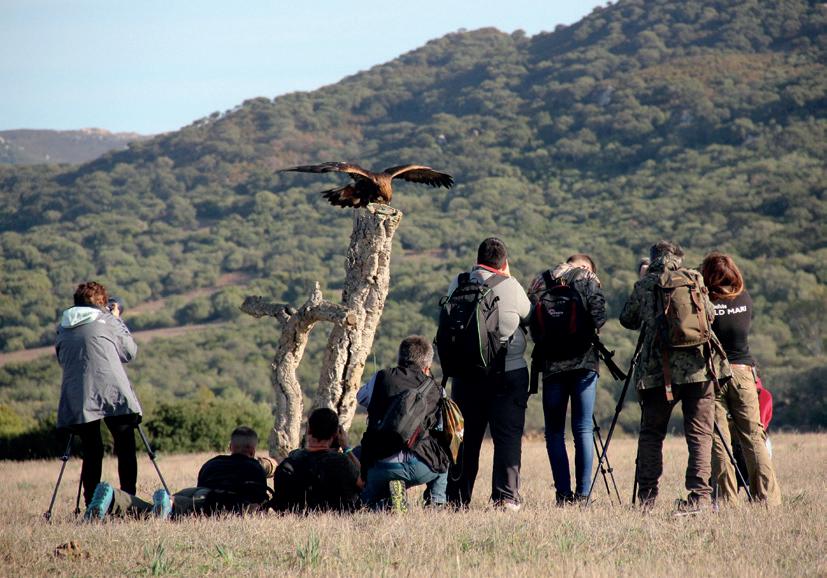
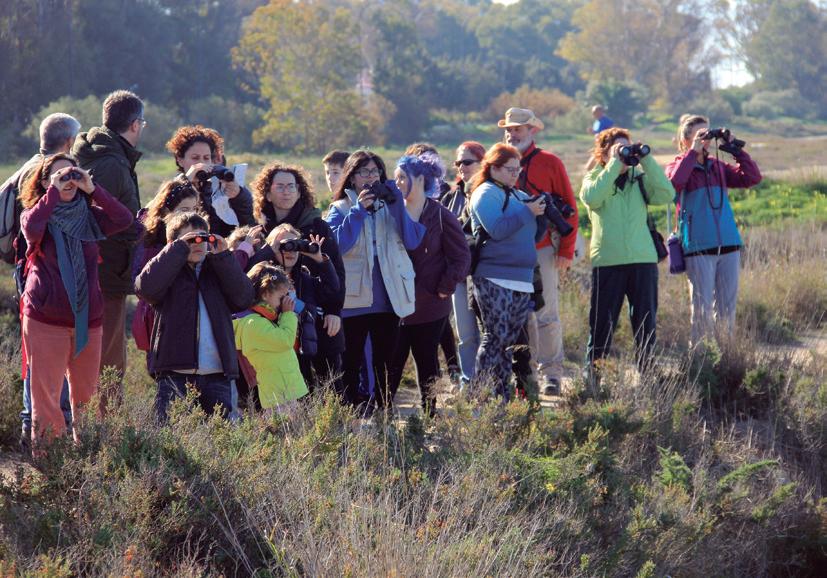
34 OTWO 09 / APRIL 2020 OTWO 09 / APRIL 2020 35

Por otro lado, frente a la obligada estacionalidad que presenta el turismo de naturaleza en otras zonas de Europa o del mundo, y más concretamente en las principales zonas de origen de este segmento turístico, la provincia de Cádiz cuenta con más de tres mil horas de sol al año, más del triple que el norte de Europa, y unas suaves temperaturas, atemperadas tanto en verano como en invierno por la cercanía del mar. Es decir, un clima que permite realizar actividades en la naturaleza todo el año.
Pero si hay algo que hace única a la provincia de Cádiz es su propia ubicación. Pocos lugares del mundo están tan situados en el mapa global, al mismo tiempo puerta de África y de Europa, del Atlántico y del Mediterráneo. Y lo ha estado además a la largo de toda la Historia, lo que le confiere, más allá de un conocimiento global, un fuerte carácter simbólico. El Estrecho ha sido y es uno de los lugares más transitados del mundo, no solo por seres humanos y sus intercambios comerciales, sino también y sobre todo como lugar preferente de paso de avifauna y especies marinas en sus flujos migratorios estacionales, lo que convierte a la provincia de Cádiz en un escenario excepcional, único en el mundo, para contemplar estos procesos naturales.
Un lugar de paso e intercambio que lo es también
de confluencia y mezcla, como se refleja en su cultura, resultado del mestizaje de otras muchas a lo largo de la Historia, y en su patrimonio natural. La situación entre dos mares y dos continentes supone la convergencia en la provincia de Cádiz de ámbitos biogeográficos diferentes que explican su elevada biodiversidad y de procesos geológicos que explican su también elevada geodiversidad. Reflejo de ello es la creación de la Reserva de la Biosfera Intercontinental del Mediterráneo Andalucía-Marruecos, que enfatiza la importancia de este nodo global.
En definitiva, la provincia de Cádiz, por su ubicación privilegiada, su favorable clima, su diversidad natural y cultural, su extensa oferta de espacios naturales y por los procesos naturales de intercambio que alberga, presenta unas condiciones excepcionales como destino turístico de naturaleza, con capacidad de ofrecer una gran diversidad de actividades, adaptadas a cada época del año y a cada perfil de visitante.
Turismo de naturaleza para un desarrollo sostenible
El turismo de naturaleza constituye una importante herramienta para el desarrollo local sostenible, a la vez que contribuye a la conservación y difusión del patrimonio natural y cultural. Por ser un turismo mu-
cho más vinculado al territorio, el turismo de naturaleza propicia un desarrollo económico descentralizado, distribuido por el territorio, con un impacto en la economía local mayor que el turismo convencional, especialmente en las zonas rurales, creando nuevo empleo y ayudando a fijar la población local, reduciendo los desequilibrios territoriales generados por el turismo litoral o urbano, al ampliar las zonas que pueden beneficiarse de la actividad turística. Esta potencialidad del turismo de naturaleza para el desarrollo sostenible de las zonas rurales es especialmente relevante en la provincia de Cádiz, dadas sus excepcionales condiciones para este segmento turístico. Conscientes de esta potencialidad, los Planes de Desarrollo Sostenible de los Parques Naturales de la provincia, como principal instrumento de dinamización socioeconómica de las áreas de influencia de los Parque Naturales, proponen entre sus objetivos la creación de una oferta turística basada en los espacios naturales, el patrimonio cultural y los aprovechamientos tradicionales, que permita diversificar y reorientar la alta dependencia del sol y playa del turismo de la provincia, garantizando al mismo tiempo su sostenibilidad, adecuando la oferta y la demanda a la capacidad de acogida del medio. Para ello, se plantean dos líneas estratégicas.
Por un lado, se pretende promover el turismo de naturaleza como oferta complementaria al turismo vacacional indiferenciado, principalmente litoral y urbano, atrayendo a este hacia actividades en los espacios naturales de la provincia y proponiendo estas como un complemento y enriquecimiento de la estancia turística. Se tratará en general de actividades de corta duración, adaptadas a un público no especializado y adecuadas a las condiciones estacionales y climatológicas. Pero por otro lado, como hemos visto, los espacios naturales de la provincia de Cádiz tienen capacidad para desarrollar una oferta turística diferenciada e independiente, no supeditada al turismo litoral como segmento dominante. Esto supone concebir la provincia de Cádiz como ámbito con capacidad para convertirse en un destino de turismo de naturaleza con proyección nacional e internacional, atrayendo a visitantes cuya motivación sea específicamente realizar actividades en los espacios naturales. El turismo ornitológico, la fotografía de naturaleza, el cicloturismo, el senderismo de grandes rutas o ciertos deportes en la naturaleza pueden ser los segmentos más visibles de un turismo de naturaleza en claro crecimiento y que debe configurase como un carácter diferenciador de la provincia de Cádiz como destino turístico.
36 OTWO 09 / APRIL 2020 OTWO 09 / APRIL 2020 37


A FOCUS ON THE ENVIRONMENTAL SAFETY GROUP’S WISHLIST
1.- CLIMATE CHANGE
Gibraltar has serious challenges on its journey towards becoming carbon neutral.
Our Government has declared a Climate Emergency Pledge and the ESG has joined with other local environmental and heritage NGOs to press for an ambitious and independently monitored programme for the decarbonising of our community.
This coalition known as the ‘Coalition for Climate Action’ has emerged from public meetings organised by the ESG in 2019, in response to the growing local and global civic call for action on climate change.
The coalition wants urgent action on:
- Transport. - Energy. - Pollution.
- Waste. - Development.
- Trade in Fossil Fuel.
We call for a funded and cross party supported,
independent climate body with a main focus to transition away from a carbon intensive society. They would be tasked with the rolling out of an agreed programme with strict timeframes and changes agreed would be imposed on all future administrations.
2.- ADHERENCE TO EU (OR HIGHER) ENVIRONMENTAL STANDARDS BEYOND BREXIT
ESG commends the Government’s commitment to continue to apply EU environmental standards in Gibraltar, even once out of the European Commission, and expects all parties to sustain this.
As stated above, our ideal objective would be to see higher than EU standards applied when these fail to deliver adequate protection.
Additionally, our aim now, under a Climate Change Pledge, would be to set goals that will radically transform our industry, transport, and trade to decarbonise Gibraltar as far as possible and as quickly as can be done. (i.e. a change in approach and strategy and not merely a legal requirement).
OTWO 09 / APRIL 2020 39 38 OTWO 09 / APRIL 2020
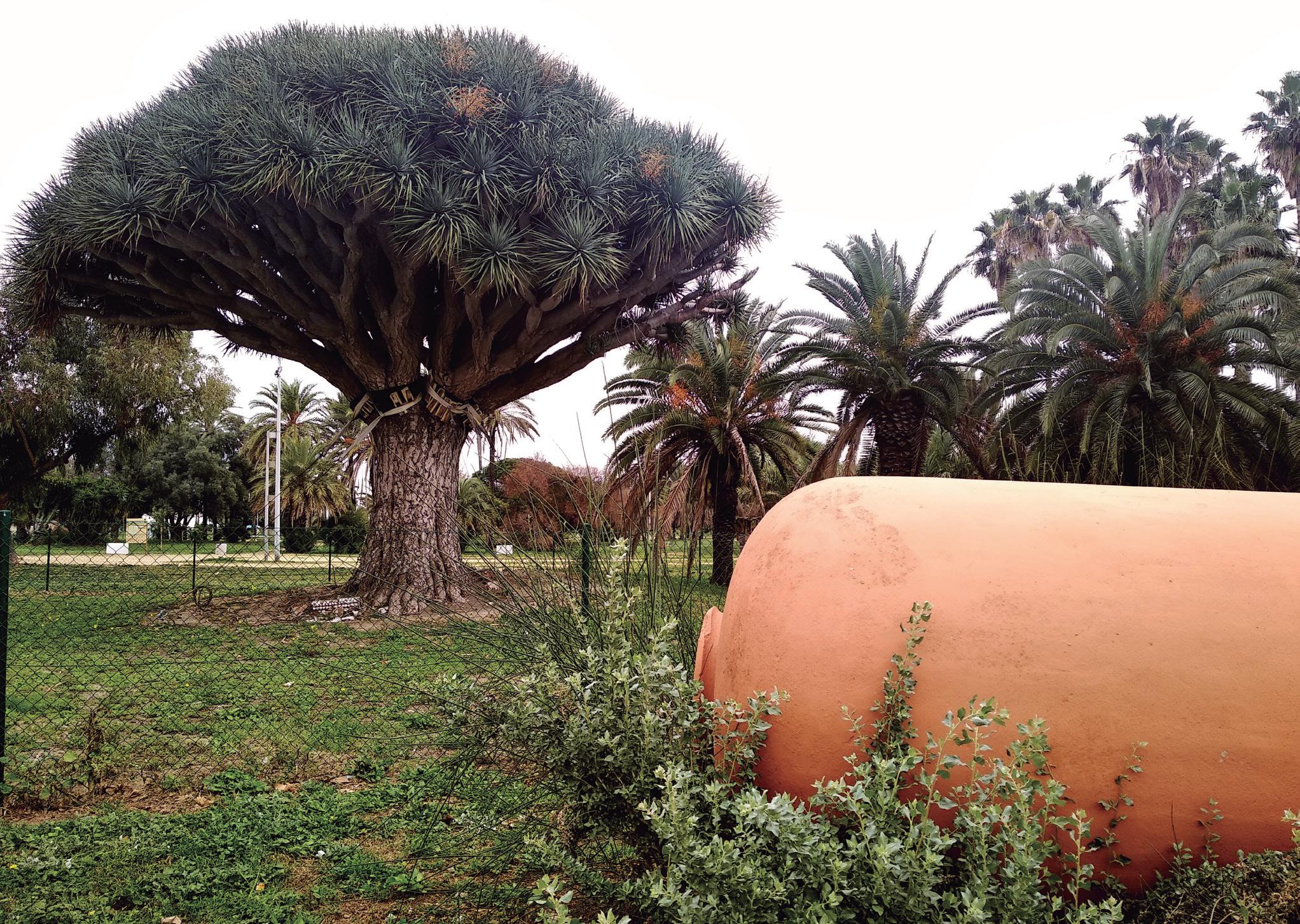
The Dragon Tree of Villa San Juan
Villalta:Text / Photographs 41 40
La Linea de la Concepción’s enduring companion Ana
Happy birthday to La Linea’s twin brother, as this year the city celebrates its 150th anniversary, marking a new and “verdant” direction for the town.
On the afternoon of June 1, 2015, before the stunned faces of onlookers, a majestic dragon tree was carried through the neighbourhood of Santiago; it turned into Avenida de la Banqueta and then paraded ceremoniously down Avenida del Ejercito, where its noble form was then planted in a corner of Princess Sofia Park.
This Dracaena Draco tree (Dracaenaceae) weighs almost forty-five tonnes and is one hundred and forty-six years old. Even so, this red sap tree revered as magical by the Guanches (aboriginal peoples) of the Canary Islands, is considered young, as trees in the Dracaenaceae family can reach several hundred years in age. Now settled in the La Linea park, it is available to those who would like to acquaint themselves with this illustrious one hundred and fortyfive-year-old neighbour.
A sibling born from the soils of the Canaries, now residing in the town of water - La Linea. A piece of magic from Tenerife planted in a place where the Mediterranean sways and the Atlantic approaches, becoming one. A symbol of nature from the Canaries living on a sandstone isthmus, now taking its rightful place on centre stage.
Just like the land from where it comes from, the dragon tree is a tree bound to art. Upon its arrival in southern Cádiz in 1870, its enchanting individuality, mysterious DNA and its attractive allure seemed to give life to the town of La Linea.
Its longevity and its unique and lush form make it the only specimen of its calibre in the province of Cadiz. Much like La Linea de la Concepcion itself, which it watches over, protects and beautifies.
Puente Mayorga had a two-hundred-year-old specimen that was included in the catalogue of singular trees of the Junta de Andalucia, but it died a little under a decade ago. In Callejon del Tinte in Cadiz another similar specimen met a similar fate when its trunk broke apart. There are other ancient trees in Ubrique, Grazalema and Cádiz, but they belong to different species.
The historic relocation of the tree was possible thanks to the economic backing of the Amado and Arana families who, additionally, and only a month
and a half after this altruistic and special event, confirmed that the tree as well as its one of its offspring, would be donated to the residents of La Linea de la Concepcion.
Diego Amado, agricultural technician and one of the new owners of Villa San Juan, tells OTWO that he remembers that it was, “a slow and difficult task to get the tree to the park, which was the place had always wanted it to go to”.
For his part, Ignacio Arana - another of the new owners - says that “it is a unique specimen but our commitment to the old property was to maintain it, despite the expense that we incurred to move the tree. Finally, the two specimens were moved to different locations.”
Amado tells us that the areas were chosen out of several locations proposed by technicians from Doctor Arbol consultancy, “after analysing the salinity, winds and the trees foliage so as not to impair visibility, in the two chosen locations.”
The promise made to Mrs. Escobar was fulfilled. The pledge to not only keep the hundred and fiftyyear-old specimen alive but to also to keep a second tree born in the backyard of 59 Jardines Street which also happens to be the offspring of the birthday boy, became a reality. Two new spaces for two young trees with so much history beneath their canopies.
A specimen that was planted as a fifty-centimetre sapling by Mrs. Escobar’s parents, who decided to plant it in their home to celebrate the new family house, is today, still standing.
Mr. Amado reminds us that, in the spring of 2015, Alberto Díaz - a technician for Doctor Árbol acknowledged that “the tree is just a kid. The biological cycles of trees are very different to ours. For example, an oak tree can reach 2,000 years in age and the Drago of Icod de los Vinos in Tenerife is around 600 or 700 years old. If we think about the maturity of this tree, he is a very young individual.”
European company Doctor Árbol was responsible for the transfer of the centennial dragon tree from Villa San Juan to the Princesa Sofía park in La Linea de la Concepcion, with the help of a Liebherr Ltm 1250-6.1 telescopic crane and a metallic barred crate together with a wooden case around the roots to ensure it was lifted safely. The labour and machinery were completed by Eurogruas. Next, a transport
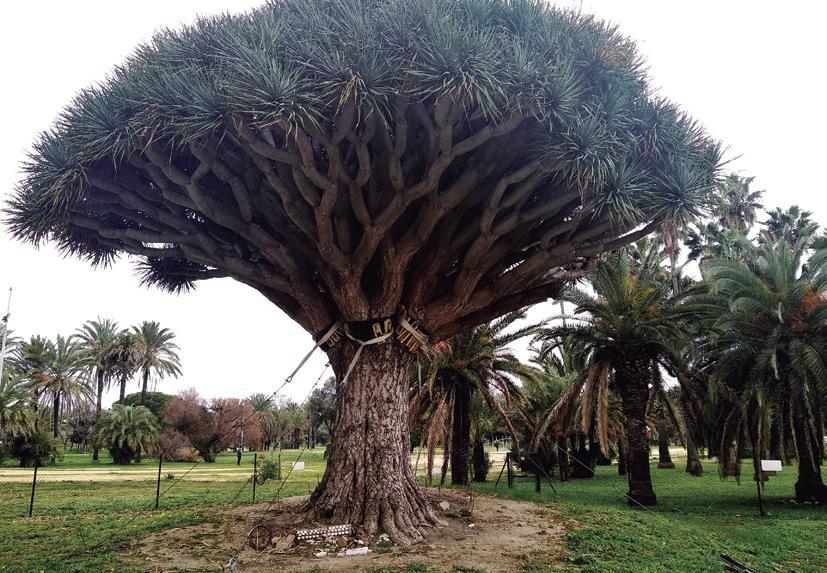
team consisting of eight lines of Goldhofer trucks pulled by an Iveco tractor unit finally unloaded the tree at its new location. Just a few weeks ago the environmental department of the city council removed half of the anchors supporting the structure and confirmed that the La Linean Dragon Tree was now secure.
The second and younger dragon tree is still anchored. It was transferred by staff from La Linea town hall to the roundabout in front of the new regional hospital and remains stong and continues to grow. The support structure is a “simple precaution,” Diego Amado confirms. The agricultural technician makes a curious reference to those who still remember our old currency; “There was a dragon tree on the old thousand peseta green bill. A tree from a place with a climate similar to ours except for the annual average temperature difference - the Canaries”.
Every detail was considered.
Obstacles were removed.
Some small branches were pruned. Streets were cut off to traffic, and in just a few hours it became another chapter in the recent history of La Linea.
A short yet difficult trip, which took a path along some of our wider roads until reaching the corner of the park that converges with the roundabout that
extends onto Gibraltar street. A few hours that left a unique imprint on La Linea’s skyline.
Hundreds of people approached out of curiosity, camera in hand to observe one of their longest-living neighbours. Social networks were flooded with videos, photographs, comments and a lot of appreciation. An outpouring of gratitude for the courage of the Amado and Arana families, who despite the high cost of this operation, did not hesitate to donate the original tree but also a second specimen to the people of La Linea. The son of Villa San Juan, who was carefully placed by technicians and city workers in its new home in the northern area of the town close to the regional hospital, is still anchored as a precaution. There, day by day, it can be a faithful witness to the common stories of the people of this town, in one of its busiest locations.
If you want to make a highly recommended visit, go and see a unique specimen with 150 years of history for yourselves, a favourite son of all the people of La Linean and an emblem of magic, art, the environment and the uniqueness that he shares with La Linea de la Concepción.
As the song by D. Alberto Cortez said: My tree was left behind, and time passed Today beneath its shade which has grown so much
We have memories, my tree and I...
OTWO 09 / APRIL 2020 43 42 OTWO 09 / APRIL 2020
El drago de Villa San Juan sempiterno compañero de La Línea de la Concepción
Cumpleaños feliz para el hermano gemelo de la ciudad en un año, el 2020, donde el 150º aniversario de la ciudad marca un nuevo y “verde” rumbo a los linenses.
Corría la tarde del 1 de junio de 2015, cuando ante la atónita mirada de algún que otro despistado, la majestuosa imagen de un inhiesto drago, recorría el barrio de Santiago, para adentrarse en la avenida de la banqueta, enfilar la avenida del ejército con señorial estampa y alcanzar con regia figura su esquina en el rincón elegido del Parque Princesa Sofía.
Casi cuarenta y cinco toneladas de un Dracaena draco (Dracanaeae) con ciento cuarenta y seis años de edad. Eso en esta familia que puede cumplir varios centenares, podía entenderse como una edad temprana pero este árbol de savia roja y mágico para los guanches canarios, pues es una especie muy habitual de las islas afortunadas, se asentaba en el principesco parque linense, para presentarse a quienes no tenían el gusto de saber de él: un vecino ilustre de 145 años.
Desde Canarias, un hermano de tierra para la ciudad linense de aguas. Un trocito de la magia tinerfeña a este lado del estrecho donde se mecen Mediterráneo y se acerca el atlántico mezclando salinidades y densidades marinas. Un símbolo de la naturaleza canaria en un istmo arenisco que venía a ocupar junto al Palenque el nuevo anfiteatro de su nueva puesta en escena.
El drago es un árbol ligado al arte, como la tierra de la que proviene y a tenor de su parada en estas tierras del sur de Cádiz, parece indicarnos que venía a regarnos en el nacimiento de la villa linense allá
por 1870, de su idiosincrasia hechicera, su ADN misterioso y su atractiva seducción.
Y es que, en la provincia gaditana, es actualmente el único que presenta estás características de longevidad, frondosidad y singularidad. Casi como esta Línea de la Concepción a la que vigila, resguarda y embellece. Puente Mayorga contó con un ejemplar bicentenario que estaba incluido en el catálogo de árboles singulares de la Junta de Andalucía pero, murió hace poco menos de una década. Desenlace similar al del ejemplar del Callejón del Tinte en Cádiz, tras romperse su tronco. Hay otros árboles centenarios en Ubrique, Grazalema y Cádiz, pero pertenecen a especies diferentes.
Este histórico traslado fue posible gracias al coste económico soportado por las familias Amado y Arana que, además tan solo mes y medio después de tan altruista y singular movimiento, certificaron la donación del árbol -y un hijo de este- a los vecinos de La Línea de la Concepción.
Diego Amado, técnico agrícola y uno de los nuevos propietarios de Villa San Juan, comenta a OTWO que recuerda aquel momento como, “una tarea lenta y difícil, para que fuese el árbol al parque que era donde queríamos que estuviese desde un principio”.
Por su parte, Ignacio Arana -otro de los nuevos propietarios- asegura que, “es una pieza única y nuestro compromiso con la antigua propiedad era mantenerlo, a pesar del cargo económico que se nos disparó. Finalmente se movieron dos ejemplares a ubicaciones distintas”.
Las zonas, nos recuerda Amado, fueron elegidas definitivamente entre varias propuestas por los técnicos de Doctor Árbol, “tras analizar la salinidad, los vientos y la frondosidad de la copa, para que no perjudicase la visibilidad, allí donde se recolocase”.
La promesa hecha a la Sra. Escobar se cumplió con creces. El compromiso de mantener con vida no solo al ejemplar que celebra su 150º aniversario si no a un segundo árbol, que nació en el patio trasero del 59 de la calle Jardines, vástago de nuestro cumpleañero, es hoy una realidad de vida. Dos nuevos espacios para dos jóvenes árboles con historia bajo sus sombras.
Un ejemplar que se plantó siendo un bebé de cincuenta centímetros porque los progenitores de la Sra. Escobar, decidieron plantarlo en su vivienda para celebrar la nueva construcción familiar y hoy, sigue en pie.
Nos recuerda el Sr. Amado que, en aquella primavera de 2015 Alberto Díaz -técnico de Doctor Árbol- reconoció, “el árbol es un chaval. Los ciclos biológicos de los árboles son muy distintos a los nuestros. Por ejemplo, una encina puede llegar a los 2.000 años y el drago de Icod de los Vinos tiene en torno a 600 o 700 años. Si hablamos de estado de madurez es un individuo muy joven porque está muy vigoroso”.
La empresa europea Doctor Árbol fue la encargada del traslado del centenario drago de la Villa San Juan hasta el parque Princesa Sofía de La Línea de la Concepción, con el refuerzo de una grúa telescópica Liebherr Ltm 1250-6.1 y la construcción de un cajón de barras metálicas y madrea alrededor de las raíces para conseguir un izado seguro. Trabajo y Maquinaria realizados por Eurogruas. A continuación, el equipo de transporte estaba formado por ocho líneas de carretones Goldhofer tirados por una tractora Iveco, para descargarse finalmente en su nueva ubicación. Hace tan solo unas semanas el departamento de medioambiente del ayuntamiento linense ha retirado la mitad de los anclajes que aún tenía en su estructura y ha confirmado la fortaleza del drago linense. Del drago que cumple siglo y medio de vida como su ciudad adoptiva.
El segundo ejemplar -aún anclado e hijo del drago mayor- que fue trasladado por personal del ayuntamiento linense hasta la rotonda de ronda norte,
frente al nuevo hospital comarcal, también sigue enérgico y sumando años. La estructura sostén es “simple precaución”, nos confirma Diego Amado. El técnico agrícola, nos hace referencia a una curiosidad que los que recuerden nuestra antigua moneda recordarán; “en el antiguo billete verde de mil pesetas hay un drago. Árbol canario, de un clima similar al nuestro salvo por la diferencia de temperatura media anual.
Se pensó en cada detalle.
Se retiraron obstáculos.
Se podó alguna pequeña rama.
Se cortaron calles al tráfico y durante horas, fue un episodio más de la reciente historia linense. Poca distancia, pero no por ello menos dificultosa, al requerir de un trazado por las vías más amplias hasta llegar a la esquina del parque que confluye con la rotonda de la prolongación de calle Gibraltar. Una jornada de horas que dejó estampas únicas en el horizonte de las calles linenses.
Cientos de personas se acercaron curiosos cámara en mano a conocer los detalles de uno de sus vecinos más longevo. Las redes sociales se inundaron de videos, fotografías, comentarios y mucha querencia. Un amor que rebosaba agradecido no solo a la valentía de las familias Amado y Arana, que a pesar del alto coste de esta operación, no dudaron un momento en donar al pueblo de La Línea no solo el ejemplar original si no un segundo especimen - hijo del primogénito de Villa San Juan- que se encuentra aún con los anclajes impuestos por precaución por los técnicos y trabajadores municipales que se ocuparon de su colocación ondas de la Ronda Norte, la más cercana al nuevo hospital comarcal, donde es testigo fiel de historias comunes de un pueblo en una de sus localizaciones más transitadas día a día. Si quieren hacer una visita más que recomendada, pasen y vean un ejemplar único con 150 años de historia que es un Hijo Predilecto de todos los linenses e insignia de la magia, el arte, el medioambiente y la singularidad que comparte con su Línea de la Concepción.
Como decía la canción de D. Alberto Cortez: Mi árbol quedó, y el tiempo pasó Y hoy bajo su sombra que tanto creció Tenemos recuerdos mi árbol y yo…
OTWO 09 / APRIL 2020 45 44 OTWO 09 / APRIL 2020


EXCELLENCE IN ENGINEERING Special design packages for Property Management companies, no obligation assessments. Write for details info@evgib.com. www.evgib.com

OTWO 09 / APRIL 2020 49 48 OTWO 09 / APRIL 2020
Written by Jenny Brown
Photographer: Pete Jackson MBE - Local Cave Guide

Inside what’s considered worldwide to be one of the Pillars of Hercules, exists a geologists dream. To date, there are more than 150 limestone caves and caverns that have been discovered inside the Rock of Gibraltar. The best example of which is Lower St Michael’s Cave, after its incredible discovery during World War 2. It is estimated to have been sealed for 20’000 years before being blasted open by Royal Engineers, excavating an entrance to the lower level of St Michaels for the use of an ungrounded hospital. It exists in its original and natural state, with minor additions such as ropes and lights that were installed for safety measures. In comparison to St Michaels Cave, which displays a spectacular lighting system, themed music and a stage area for hosting concerts, entering Lower St Michaels Cave is like stepping back in time.
The adventurist team at OTWO & I were to invited to a guided tour inside the depths of the Rock’s most visited attraction. We met above the entrance of the cave in daylight and our lovely guide provided us with safety helmets along with head torches, that we could also wear around our necks for extra light. Greeting everyone I could already feel the groups excitement in anticipation of the experience. On the walk down, admiring the clear sky views of Africa and Southern Spain, it felt like we were edging nearer to an unforgettable experience inside the ancient history of this Rock. The guide opened a big metal door, the sound of which echoed into the long dark and narrow chamber ahead. I took one last look at the branches, trees and light around the entrance, not only feeling appreciation for their detail, but also holding onto the moment before entering a darker and completely different atmosphere.
We walked carefully and closely together through a dimly lit tunne, noticing a change in the density of the air. It felt clearer and cooler. After about 50 meters we could see what appeared to be old tracks for rail wagons used during the war, followed by large cave opening. The space held an area where we could leave our belongings and adjust our clothing, but this lower chamber previously served as a hospital, for soldiers, whilst also improving air circulation within. The open space echoed sound, amplifying our voices as we spoke. The only lasting natural light glowed from the entrance door before the gui-
de closed it shut. We gathered and were humored by the charisma of our guide. What to expect, what not to expect, and the start of some very believable myths that would playout throughout the tour. We were eased by his awareness and experience having guided many people into the caves, as some of us had never participated in such an activity. For some, nerves came from heights, for others small spaces, but being with the guide helped us feel encouraged and centered. He established a procedure of safety and awareness, one where we were could all follow and support each other. The chain was removed and we commenced our decent into the caves.
The first official archaeological excavation of St Michael’s Cave was carried out by the Governor of the military prison, Captain Frederick Brome, commencing in April 1863 and continuing until December 1867. He discovered numerous prehistoric artifacts such as stone axes and arrow heads, shell jewellery, and bone needles as well as large collections of pottery. But it was during 1942 that these astonishing, untouched deeper system of caverns of Lower St Michaels Cave were discovered. During the war, the tunnelling commenced after it was feared that in the event of an airstrike, a second exit would be vital. What was revealed could be comparable to fictional depictions of a magical underworld. What gives Lower St Michael’s Cave it’s extraordinary uniqueness, is the fact that it is home to many of the known speleological formations. The ones that were mostly noticeable were formed by precipitations from a caves ceiling. A stalagmite being an upward growing mound of mineral deposits that have precipitated from water, dripping onto the floor of the caves. Most have rounded or flattened tips. It’s opposite, a stalactite, is an icicle shaped formation that hangs from the ceiling of a cave. There are others, such as rim stone, helictites, columns, coral rocks, flowstone, straws and curtains, to name a few of these amazing natural cave formations.
As we climbed through different stages of the tour, holding onto the slippery walls and gripping onto rock edges with our non-slip soled shoes, it was evident how much our helmets and casual attire served their purpose. The tour literally involves getting stuck into the experience. I vividly remember feeling a sense of achievement and a rush of adrenaline
OTWO 09 / APRIL 2020 51 50 OTWO 09 / APRIL 2020

with each descent, each rope hold, swing and slide. The different levels and manoeuvers were unexpected and our hands reached out to support each other as we climbed into the unknown. This, to me, defined the meaning of risk activity teamwork. I felt gratitude for every moment I was unsure of moving forward with the reassurance provided by the guide and other climbers.
We finally reached the furthest spot and highlight spectacle of the journey. An underground lake. Our tour guide shone his torch upon the water’s surface, lighting up the grandeur of the chamber, with a backdrop of what resembled a cathedral, with organ pipe silhouettes. It was breathtaking, and such a memorable moment. Like witnessing the gold at the end of a mine. What followed was a knee jerking walk around the slightest edges of the lake, nearly 40 yards long and estimated to hold 45’000 gallons of crystal clear water, it was another great achievement in strength, determination and trust.
Throughout this tour, I would often have moments to stop and recognize my surroundings. Being in a cave is a beautiful feeling. They are the atmosphere is naturally regulated, warm when it’s cold out and cool when it’s warm. You don’t realise how scary and powerful a feeling it is having a whole mountain on top of you, until you are in the dark or when you begin experiencing the silence. All the familiar noises of the upper world are gone, the wind, the rustle of branches or leaves, the chirping of birds, the sound of automobiles and doors slamming. There is nothing but the faint tinkle of droplets of water, each drop

like a distant musical chime, and each one pursued by tiny echoes. Then, after such a note sounds there would be a long and empty quiet (in between our laughter) in which you can hear your own breathing and the steady beating of your heart. You find yourself straining your eyes to see something, in the slightest sign of light, discovering patterns, shapes and even characters in the shadows. It is unlike any other experience I have felt.
We retraced our steps back to the entrance, this time with more confidence in knowing how to climb through the cave and what was to come. The guides knowledge of the history of the caves was thorough and enough to drop jaws now and then. He really kept us in good spirits through some fears. The whole tour lasts approximately 3 hours. At the end I not only felt a sense of achievement, but really invigorated. From the beginning I noticed a communal excited expression of concern about how things were going to unfold, but I feel the human condition to be stronger than our awareness. Once that metal door opened up to the then darkened evening sky there was a resounding sigh of joy. The stars shone brightly and the cool air was welcomed, after our lengthy work out. The cave taught me two things, that light in darkness is sacred, and there is deep beauty to be found in silence. For those that feel unsure or have hesitations in witnessing the magic of Lower St Michael’s Cave’s, in the least expected places, there exists the most beautiful treasure. A phrase by Josh Campbell comes to mind: “The very cave you are afraid to enter, turns out to be the source of what you are looking for”.
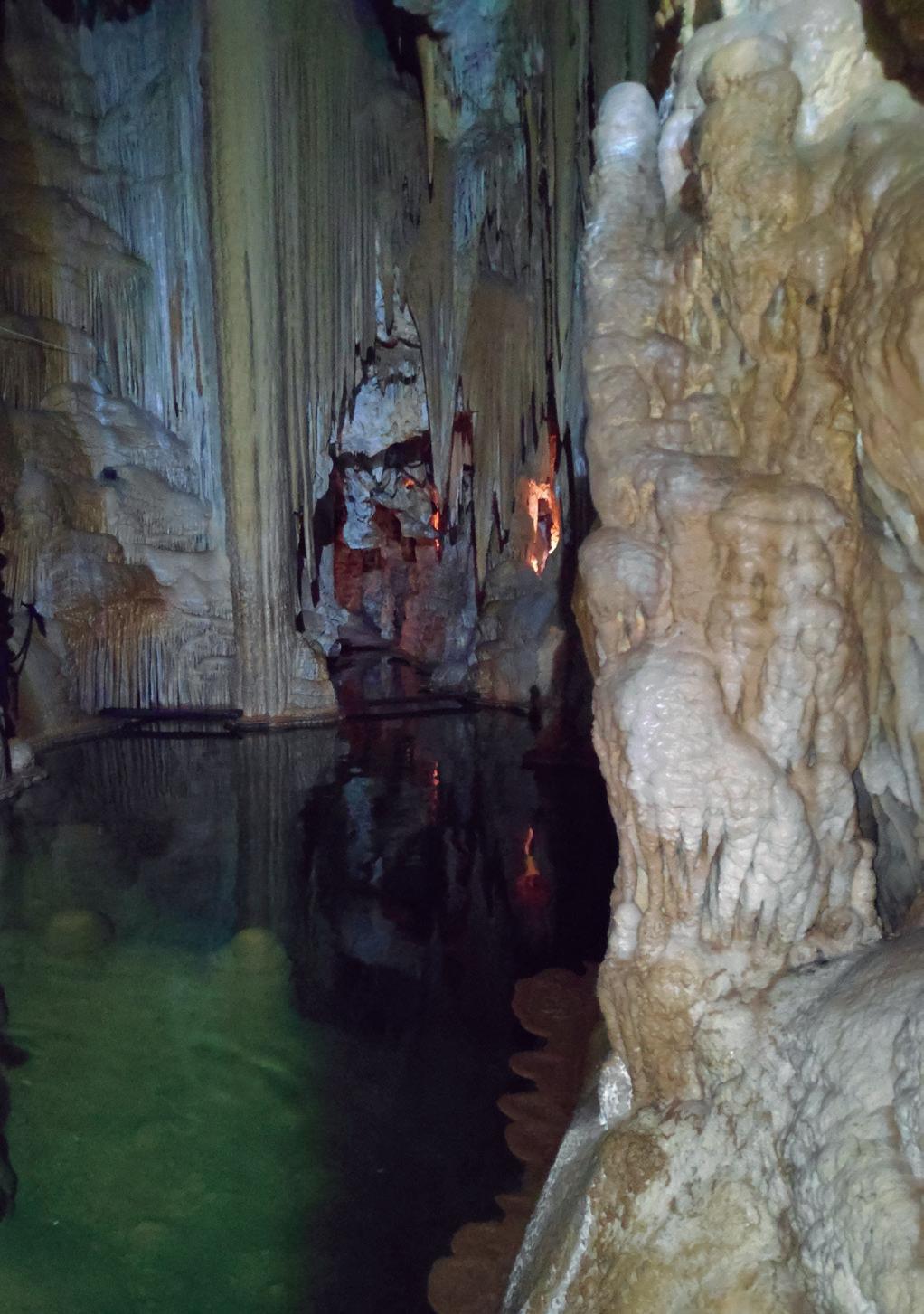
52 OTWO 09 / APRIL 2020 OTWO 09 / APRIL 2020 53
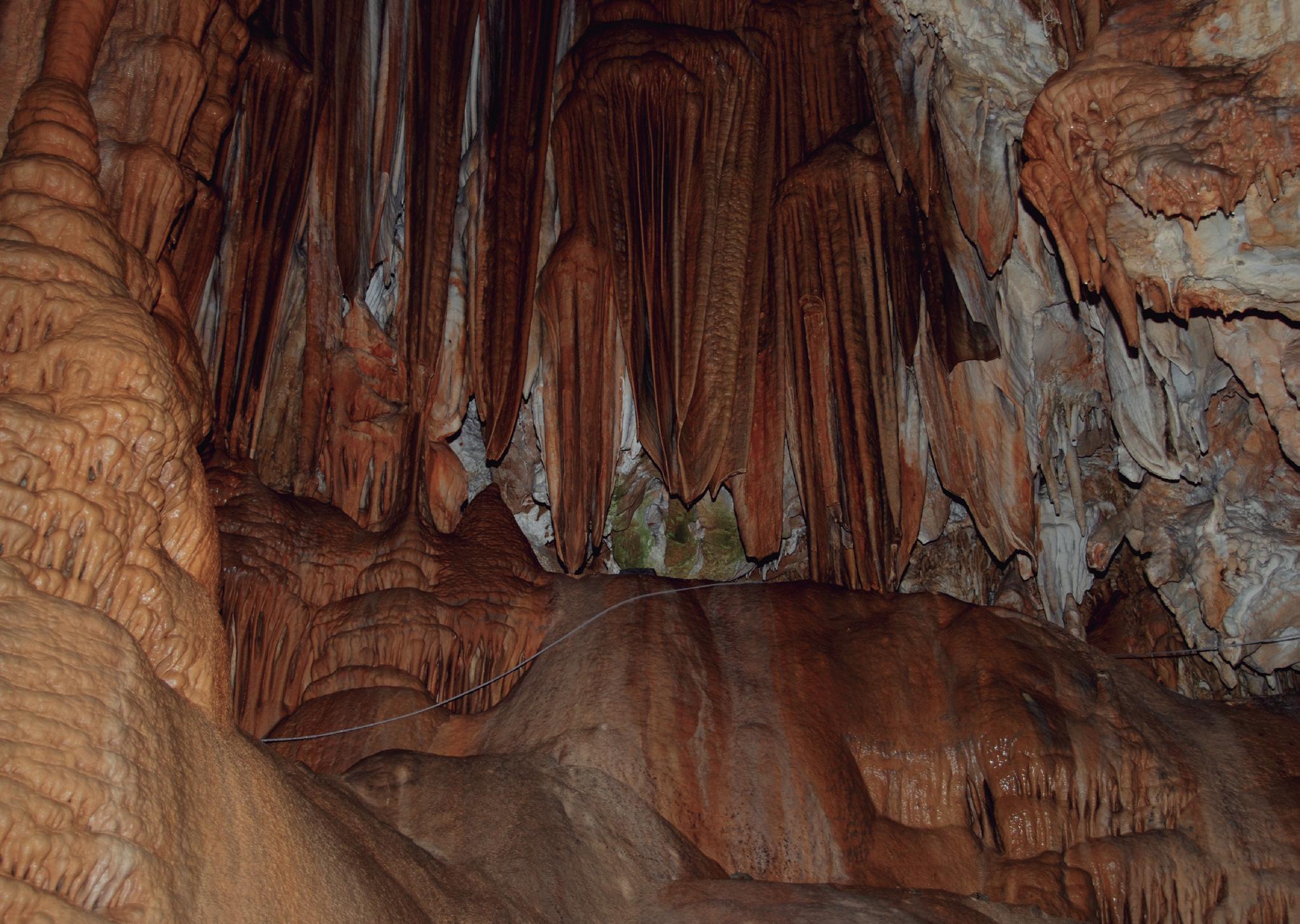

LA CUEVA BAJA DE SAN MIGUEL
Jamás debemos olvidar la importancia de la historia antigua
El sueño de un geólogo se esconde en el interior de lo que está aceptado mundialmente como uno de los Pilares de Hércules. Hasta la fecha se contabilizan más de 150 cuevas y cavernas de piedra caliza dentro del Peñón de Gibraltar. La cueva baja es el último ejemplar de semejante catálogo, habiendo sida descubierta, asombrosamente, durante la segunda guerra mundial. Se calcula que permaneció sellada durante 20.000 años hasta que los Reales Ingenieros del ejército británico la reabrieron en busca de un nuevo acceso a las cámaras inferiores de la cueva principal. Conserva su aspecto original, con apenas algunos aditamentos como cuerdas y luces que fueron instaladas por motivos de seguridad. En comparación con la cueva de San Miguel, que dispone de un sistema de luces espectacular, música temática y un escenario para conciertos, la cueva baja ofrece una experiencia comparable a viajar atrás en el tiempo.
El equipo de aventuras de OTWO y quien esto escribe fuimos invitados a una visita guiada a las profundidades de la atracción más visitada del Peñón. Nos reunimos a la entrada de la cueva en horario diurno y nuestro encantador guía nos hizo entrega de cascos de seguridad y linternas de cabeza que también pudimos colgar del cuello para disfrutar de un poco más de luminosidad. Ya en el momento de encontrarnos pude palpar la sensación de gran emoción de todo el grupo justo antes de afrontar la experiencia. En el descenso a pie, admirando los cielos despejados de África y Cádiz, sentimos como si nos estuviéramos aproximando a una experiencia inolvidable en el interior de la historia antigua de este Peñón. El guía abrió una puerta grande metal cuyo sonido hizo eco en la larga, oscura y estrecha cámara a la que da acceso. Eché un último vistazo a las ramas, árboles y luz de la entrada, apreciándolos con detalle y agarrándome a ese momento antes de
adentrarme en un escenario más oscuro y drásticamente distinto.
Avanzamos de forma cuidadosa y muy juntos a lo largo de un túnel de luz tenue, advirtiendo un cambio en la densidad del aire, que se sentía más limpio y fresco. Después de unos cincuenta metros pudimos distinguir lo que parecían ser viejos raíles ferroviarios usados durante la guerra además de una amplia abertura cavernaria. Este espacio aloja una zona donde pudimos dejar nuestras pertenencias y ajustar nuestro equipamiento. En su día sirvió de hospital para soldados además de zona para facilitar la ventilación. El espacio abierto producía eco, amplificando nuestras voces. La única luz natural procedía de la puerta de entrada, que el guía cerró de repente. Su carisma contribuyó a fortalecer tan especial atmósfera: qué esperar y qué no. Nos encontrábamos en la casilla de salida para enfrentarnos a una serie de leyendas, muy verosímiles, que se desplegarían a lo largo del recorrido. Su conocimiento y experiencia, fruto de haber guiado a tantas personas por las cuevas, contribuyó decisivamente a hacer más amena y fácil la actividad a quienes la hacíamos por primera vez. Algunos sentían nervios por las alturas, otros por los espacios reducidos, pero la compañía del guía nos permitió mantenernos centrados y con ganas. Estableció un procedimiento de seguridad con el cual nos podíamos apoyar y seguir los unos a los otros. Se abrió una trampilla y comenzamos el descenso por las cuevas.
La primera excavación arqueológica de la Cueva de San Miguel fue impulsada por el gobernador de la prisión militar, el capitán Frederick Brome, y comenzó en abril de 1863 para prolongarse hasta diciembre de 1867. Descubrió varias herramientas prehistóricas como hachas de piedra y cabezas de flecha, joyería de concha y agujas de hueso además de vastas colecciones de cerámica. Estas cavernas del sistema
OTWO 09 / APRIL 2020 57 56 OTWO 09 / APRIL 2020
más profundo de San Miguel, asombrosas e intactas, fueron descubiertas en 1942. Durante la guerra, el tunelamiento comenzó tras considerarse la importancia vital de disponer de una segunda salida ante la amenaza de un ataque aéreo. Lo que se descubrió sería comparable a las descripciones ficticias de un mundo subterráneo mágico. Lo que confiere a la cueva baja de San Miguel su extraordinaria singularidad es el hecho de que alberga muchas de las formaciones espeleológicas conocidas. Las más reseñables se formaron por precipitaciones desde el techo de la cueva, siendo la estalagmita una forma ascendente de depósitos minerales a partir de agua que se precipita sobre el suelo de las cuevas. La mayoría tienen puntas redondeadas o planas. Su contrario, la estalactita, es una formación con forma de carámbano que cuelga del techo de una cueva. Existen otras, como la roca bordeada, los electitos, las columnas, las rocas de coral, coladas o cortinas, sólo por nombrar algunas de estas alucinantes formaciones.
Según ascendíamos por diferentes etapas del recorrido, apoyándonos en las paredes resbaladizas y pisando los salientes de roca con nuestro calzado de suela anti resbaladiza, se evidenció la importancia de nuestros cascos y demás equipamiento. El recorrido implica, claramente, sumergirse en la experiencia. Recuerdo nítidamente el sentido de alcanzar un logro y experimentar un torrente de adrenalina con cada descenso, cada vez que agarraba una cuerda, cada balanceo. Los diferentes niveles y maniobras llegaban de forma inesperada y nos agarramos mutuamente para seguir avanzando hacia lo desconocido. Esto último, según lo analizo, define el trabajo en equipo en una actividad de riesgo. Sentí agradecimiento por cada momento en el que dudé, apreciando la confianza que me proporcionaron el guía y mis compañeros de aventura.
Alcanzamos finalmente el punto culminante del trayecto: un lago subterráneo. Nuestro guía apuntó su linterna hacia la superficie del agua, iluminando la grandeza de la cámara, con una estampa que se asemejaba a una catedral con siluetas de órgano de tubo. A continuación sobrevino un muro angulado que rodeaba los bordes más angostos del lago, con casi 40 yardas de largo y albergando unos 45.000 galones de agua cristalina. Fue otro logro en términos de fuerza, determinación y confianza.
Durante este recorrido me paré a menudo para observar lo que me rodeaba. Estar dentro de una cueva proporciona una sensación hermosa. Están graduadas termostáticamente: son cálidas cuando hace frío fuera y frescas cuando hace calor. No se aprecia lo poderosa y atemorizante que es la sensación de tener una montaña entera encima hasta encontrarse en la oscuridad o cuando se empieza a oír el silencio. Todos los sonidos familiares del exterior se han desvanecido: el viento, el agitar de las ramas y hojas de los árboles, el canto de los pájaros, el sonido de los automóviles y los portazos. No hay más que el leve golpeo de las gotas de agua, cada una como una nota diferente y cada una amplificada con pequeños ecos. Después de sonar una de estas notas sobreviene un silencio largo y vacío –entre nuestras esporádicas risas- en el que puedes oír tu propia respiración y el latido de tu corazón. Fijas la vista para divisar algo entre la luz más angosta, descubriendo formas, patrones y hasta personajes en las sombras. No se parece a ninguna otra experiencia que haya vivido.
Volvimos sobre nuestros pasos hacia la entrada, esta vez con más confianza a la hora de saber cómo conducirnos por la cueva y respecto a qué nos encontraríamos a continuación. La sabiduría del guía en cuanto a la historia de las cuevas bastó para asombrarnos una y otra vez. Mantuvo elevado el ánimo del grupo cuando sobrevenía algún temor. El recorrido entero dura unas tres horas. Al final sentí tanto la conquista de un logro como una fuerza interior añadida. Desde el principio intuí una manifestación común de preocupación ante lo que se nos iba a desplegar delante, pero considero que la fortaleza del ser humano es superior a su miedo. Al abrirse la puerta de metal y descubrir un cielo vespertino, se produjo una algarabía general. Las estrellas brillaban con fuerza y agradecimos el aire fresco después de nuestro largo esfuerzo. La cueva me enseñó dos cosas: que la luz en la oscuridad es sagrada y que existe una belleza profunda en el silencio. Para aquellos que sientan inseguridad o resquemor por visitar la magia de la cueva baja de San Miguel les puedo decir que el tesoro más bello se halla en los lugares más recónditos. Me sobrevienen aquí unas palabras de Josh Campbell: “la misma cueva a la que temes entrar resulta ser la fuente de lo que estás buscando”.

58 OTWO 09 / APRIL 2020 OTWO 09 / APRIL 2020 59
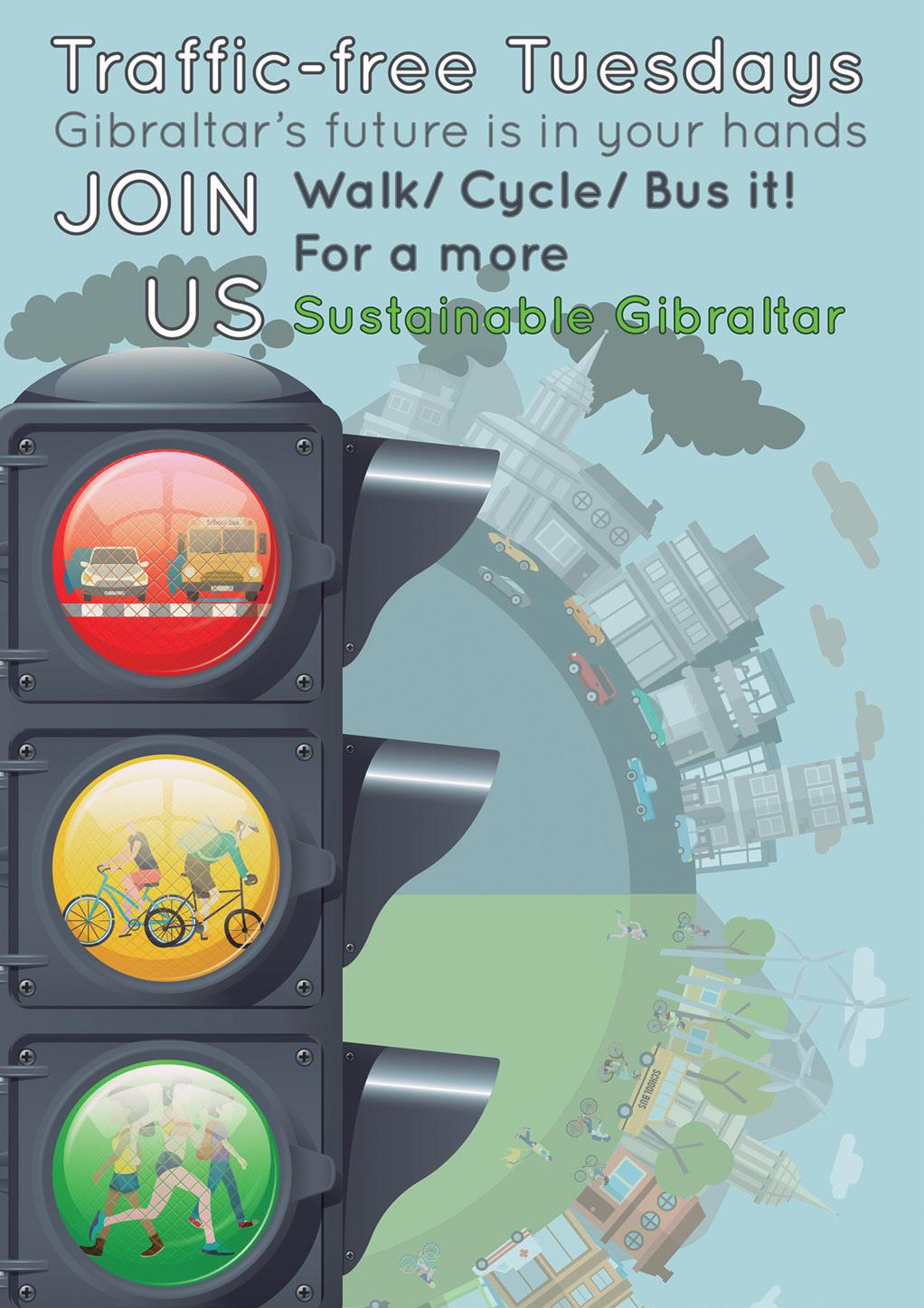
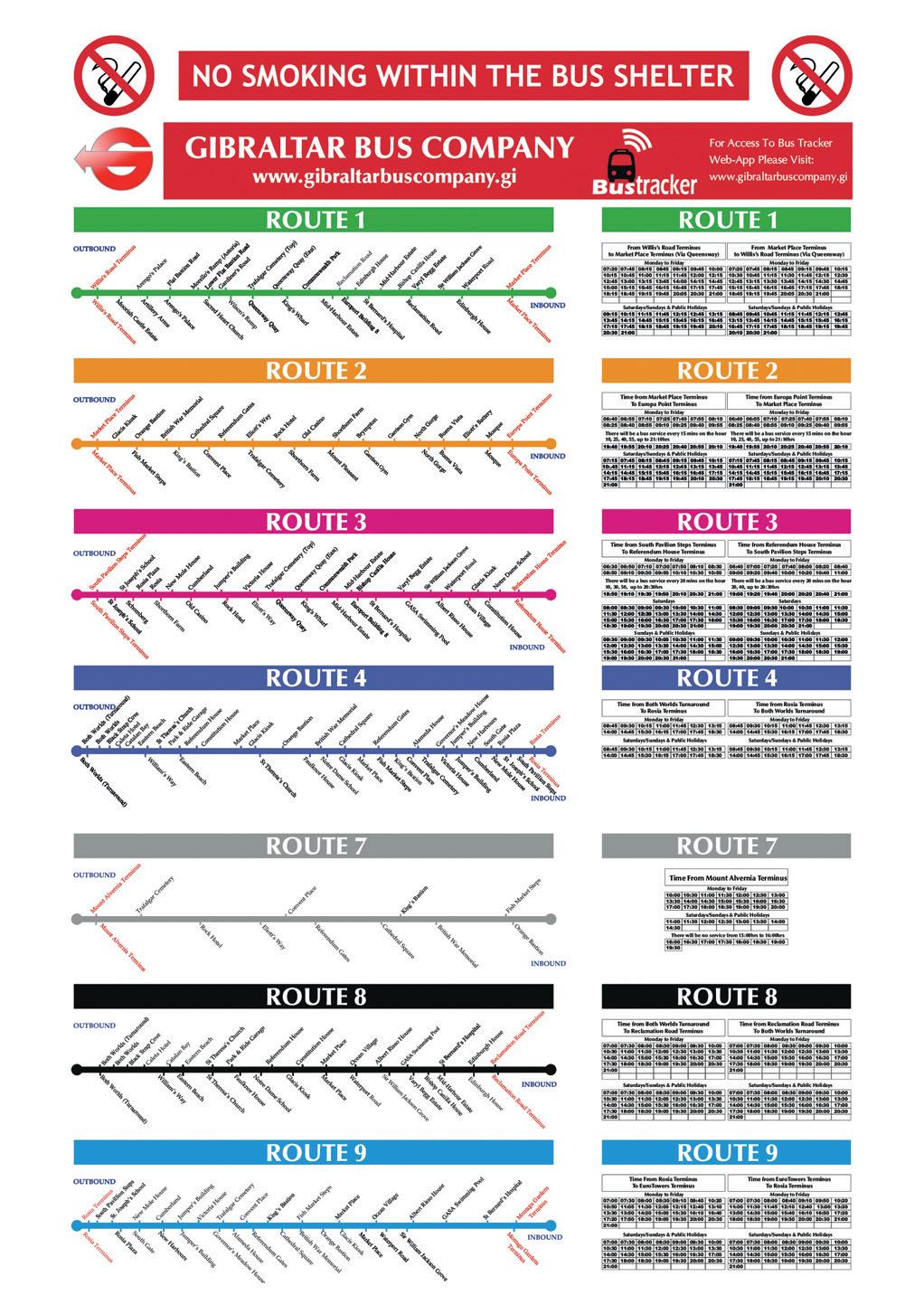
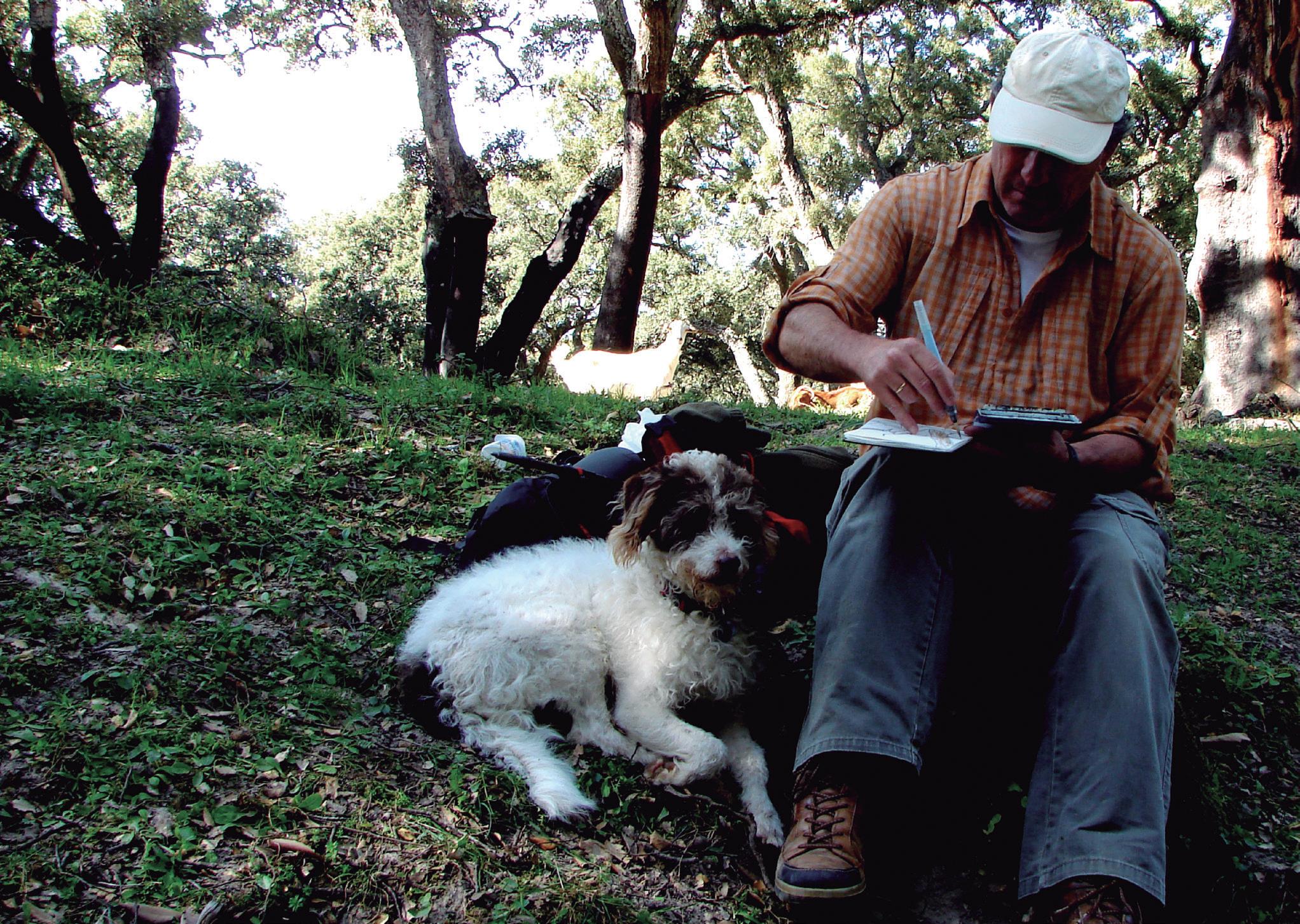
Nicolás Ruíz de la Corte
“ESPINTAPÁJAROS”
The Painter of the Straits
El pintor del Estrecho
Written by Alfredo Valencia
OTWO 09 / APRIL 2020 63 62 OTWO 09 / APRIL 2020
Photos: Nicolás Ruíz


Born in Algeciras in 1965, he was a sailor from a young age and was as enthusiastic about drawing and painting as he was about nature, he dedicated himself to the enhancement of nature through painting and illustration and often the painting of marine landscapes. He has written innumerable publications in various languages such as nature guides, ecotourism guides, information panels, graphic magazines, books, etc. He has exhibited his works in both group and solo exhibitions across the country and his works hang on many a wall around the world. Currently, he continues to work in his beloved Straits of Tarifa, promoting the natural values of this paradisiacal area to the world through his art in order to protect it. His motto is “Working for, with and in the Straits”.
You were born in Algeciras, what memories do you have of Algeciras from your childhood?
The memories I most cherish are of one of the beaches in Rinconcillo, which at the time was less strangled by the port – a place that our city now has a love / hate relationship with. I used to spend my days and the occasional summer night visiting the beach and bathing in its waters. I remember looking out of the window of my classroom at the Marinero Javier Cervera School and seeing flocks of Flamingos, Eurasian spoonbills and Cattle egrets flying towards the estuary of the Palmones river and imagining where they had come from. And I very much remember the mountains and pine forests near our home that have now been replaced by housing estates, and excursions to have picnics near the secluded chapel which is now practically in the city centre. When did your interest in art start?
My interest in art, specifically painting, was born from a place that exists in all of us, I believe that it is something inherently human, but that most of us abandon it. My mother would give me pencils and a notebook so that I could entertain myself, and that’s where it all started. I loved to copy drawings from the comic of the great Ibañez or from Marvel superhero comics and it became, over anything else, a worthwhile and even my best form of expression. Immediately I began to draw the nature that I loved so much, due to the mere need to communicate it. What artistic studies have you done or are you self-taught?
I am self-taught because I did not have the opportunity to study art or biology, which was what I most enjoyed. From an early age I embarked down a path with the hope of being like my elders and working at sea and when I finally realised what I really wanted to do I could not retrace my steps. I always made great use of pencils and pens until at one stage of my life I took hold of paintbrushes and just “exploded” and I have never been able, or wanted to let go of them, they became my own peculiar way of living life. What inspires you when it comes to painting?
Nature is always the axis of everything that inspires me, beauty, love, injustice, longing, etc. Everything is related to it, I can see the similarity between people and birds in, for example, migration - something that I believe is always legal, natural and necessary. Or between my own town’s fishing trade and the beautiful and rare ospreys that fish in the estuary of the Palmones river. I also always try to assert the problems facing different species and ecosystems through my paintings; however, I also try to make the paintings artistically beautiful.
How did your nickname “Espintapajaros”
(Spanish play on words: ‘Espantapajaros’ means Scarecrow, ‘pintar’ means to paint) come about?
It was very simple once I had asked myself the question in the third person - who or what is Nicolas? The answer was obvious ... a ‘Pinta Pájaros’ (bird painter). The anagram being a scarecrow that loves and paints birds.
How do you rate the artistic landscape of the Campo de Gibraltar?
The world of so-called ‘Wildlife Art’ or ‘Nature Art’ is not particularly in good health, both in our region and in our country, its only saving grace is some commissioned painting and to a greater extent illustrations at a national and international level for educational purposes. But those of us dedicated to it are, at our core, naturalists and will always continue to promote it.
You have a great interest in the environment. What do you think should be done to protect the environment in general terms?
I think that by the time we realise that the environment protects us it will be late for us, although the planet will heal. It is painful but I am a recalcitrant pessimist, each day human beings reinforce that
64 OTWO 09 / APRIL 2020 OTWO 09 / APRIL 2020 65
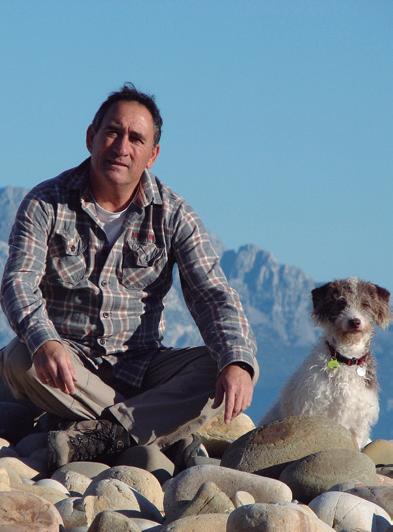
mindset, hopefully I am wrong. I do not mean that we should stop placing any measures that we can think of on the table or that we shouldn’t keep fighting for all of our futures with the weapons we each have at our disposal against the way we so inappropriately keep expanding.
Out the numerous exhibitions you have participated in, which would you say stands out?
The standout was a work commissioned on the first centenary of the creation of the National Parks Laws. I was commissioned to carry out a piece that depicted the Bolles pidgeon of the National Park of Garajonay in La Gomera. Together with the greatest nature artists in the country, some of which I have admired from a young age, I attended said exhibition at the Ministry of Agriculture, Fisheries and Food in Madrid. It made me feel like I was going places.
Where would you like to exhibit that you have not done so yet?
Each exhibition is important to me if it means I am creating awareness with my paintings, like every artist we ultimately want to express a message, what I like is reaching the maximum number of people and that my voice (my paintings) resonates loudly
and powerfully so that people protect nature and get to know this particular method of discussing it through brush strokes. This interview with OTWO for example is a way of doing that and therefore good exposure.
Are your works part of a series or are they independent?
Normally, when an idea takes me, I need to complete several works until I am satisfied so they tend to be series but in reality everything revolves around nature, so in the long run I end up combining them if together they send a clear message and although they are related they can also be distinct.
You have also contributed to numerous publications, which would you say is a highlight?
Although I love the ones that I often do for ecotourism guides, I adore the ones for scientific identification. I love the idea of helping someone identify a species for the first time. The highlights are “The Whales and Dolphins of the Canary Islands” poster, which is ready and pending publication, my latest work “Seashells and marine snails”, the cover of “Anthropocene” in which I highlight both the virtues and tragedies we experience in the Campo de Gibraltar and my latest illustrated book “Ínsulas”.
What are your links to environmental groups in the region?
I belong to the Black Stork Ornithological Organisation, I collaborate with all of the associations within the region that need me and I work closely with the Natural Park of the Straits with which I identify very much with, to the point where the aim of my artistic publications are encapsulated by the phrase “Working for, with and from the Straits.”
Do you think that the environment in the area should be more cared for?
It is necessary, we breathe, eat, drink, love and nurture within it, ultimately, it is where we live. Finally, what are your next artistic projects?
I currently have an illustration contract for a guide to Terrestrial and Galapagos Turtles which I am immersed in. I have just finished illustrations for the Cape Verde Interpretation Centre in Cape Verde about the African birds found there, and I have a project of fifteen works that will talk about the migration of birds and humans through the Straits which is due for completion in mid-2021.

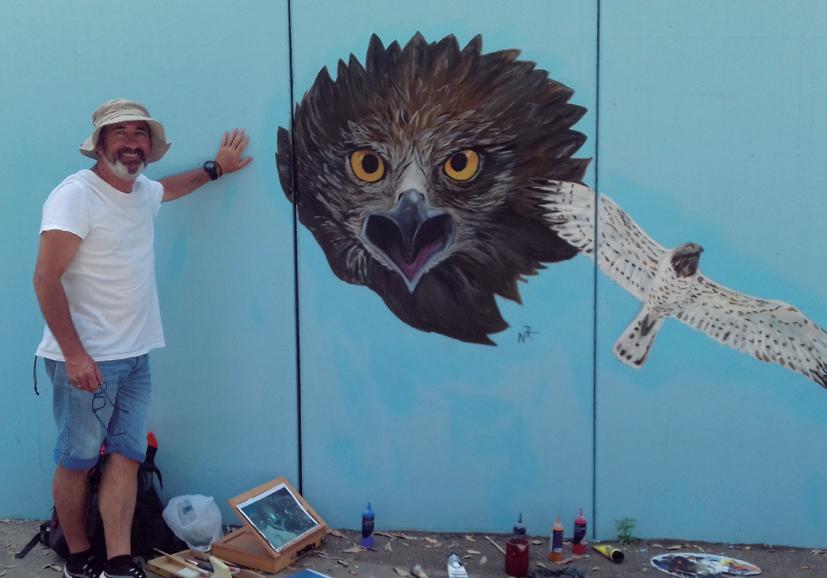
66 OTWO 09 / APRIL 2020 OTWO 09 / APRIL 2020 67

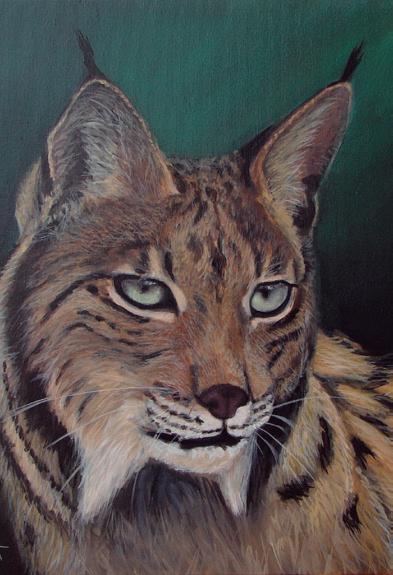


Nacido en Algeciras, 1965, marino desde temprana edad y tan entusiasta del dibujo y la pintura como de la naturaleza, no hizo sino propiciar las circunstancias para dar como resultado un pintor e ilustrador de la naturaleza, muy habituado también al medio marino. Ha realizado innumerables publicaciones en varios idiomas como son guías de naturaleza, ecoturísticas, paneles explicativos, revistas gráficas, libros, etc.. ha mostrado sus obras en exposiciones colectivas y monográficas por toda la geografía nacional; sus obras cuelgan de muchas paredes del mundo.
En la actualidad, sigue trabajando en su adorado Estrecho de Tarifa con la intención de divulgar los valores naturales de este paraíso para protegerlo, proyectándolo al mundo desde su arte, con el lema “Trabajando por, para y en el Estrecho”.
¿Usted nació en Algeciras, qué recuerdos guarda de la Algeciras de su infancia?
Los recuerdos que guardo son los de una playa del Rinconcillo menos estrangulada por el puerto con el que la ciudad guarda esa relación de amor/odio, donde pasaba mis dias y alguna que otra noche veraniega recorriendola y bañandome en sus aguas. Recuerdo ver desde la ventana de mi aula del Colegio Marinero Javier Cervera los bandos de Flamencos, Espátulas y Garcillas volando hacia la desembocadura del río Palmones e imaginar de donde venían. Y recuerdo con mucha añoranza esos montes y pinares cerca de casa que fueron sustituidos por urbanizaciones y esas excursiones para merendar en la agreste Ermita que ahora está practicamente en el centro de la ciudad.
¿Cuando empezó a sentir interés por el arte? Mi interés por el arte, en concreto por la pintura nació al igual que en todos nosotros, ya que pienso que es algo inherente del ser humano, pero que la mayoría abandonamos. Mi madre para que me entretuviera me daba unos lápices y una libreta y ahí comenzó todo. Me encantaba copiar los dibujos de los comics del gran Ibañez o de los superheroes de Marvel y se convirtió en una forma de expresión tan válida o mejor que cualquier otra y en seguida comencé a dibujar la Naturaleza a la que tanto amaba por la mera necesidad de hablar de ella.
¿Cuáles son sus estudios artísticos o es autodidacta?
Soy autodidacta porque no tuve la oportunidad de estudiar arte o biología, que era lo que me gustaba, ya que desde temprana edad embarqué ilusionado con parecerme a mis mayores en eso de trabajar en la Mar y cuando quise darme cuenta no pude volver sobre mis pasos. Siempre saqué rendimiento a lápices y bolígrafos hasta que en una etapa de mi vida tomé los pinceles y “explosioné” y ya jamás he podido ni querido soltarlos ya que se convirtieron en mi peculiar modo de vivir la vida.
¿Qué le inspira a la hora de pintar?
Siempre con la Naturaleza como eje todo me inspira, la belleza, el amor, la injusticia, la añoranza, etc.. Todo guarda relación con ella, encuentro la similitud entre las personas y las aves por ejemplo en la migración, para mi siempre legal, natural y necesaria, o entre los oficios de los pescadores de mi pueblo y las hermosas y escasas Águilas Pescadoras que faenan en la acosada desembocadura del Palmones. Tambien intento siempre reivindicar las problemáticas de las diferentes especies y ecosistemas con mis pinturas sin quedarme nada más, aunque la procure tambien, en la belleza de una obra.
¿Cómo surgió su apodo de Espintapájaros?
Fué de lo mas sencillo al hacerme la pregunta en tercera persona, ¿Quien o que es Nicolás? la respuesta es de cajon... Es Pinta Pájaros. El anagrama obviamente un espantapájaros que ama y pinta pájaros.
¿Cómo valora el panorama artístico del Campo de Gibraltar?
El mundo del llamado en otros paises Wildlife Art o arte de la vida salvaje o de Naturaleza no goza de buena salud ni en nuestra comarca ni en nuestro pais y su única salida es la de algún cuadro por encargo y en mayor medida la ilustración a nivel nacional e internacional con fines didácticos. Pero los que nos dedicamos a esto somos de base naturalistas y continuaremos siempre intentando ponerlo en valor.
¿Siente un gran interés por el medio ambiente.
Que considera que se debe hacer para proteger el medio ambiente en lineas generales?
Pienso que para cuando nos demos cuenta de que es el medio ambiente el que en realidad nos protege a nosotros será tarde, por supuesto para nosotros, aunque el planeta sanará. Es doloroso pero soy un pesimista recalcitrante, cada día el ser humano me
OTWO 09 / APRIL 2020 69 68 OTWO 09 / APRIL 2020

da la razón, ojalá esté equivocado. No quiero decir que tengamos que parar de poner todas las medidas que se nos ocurra sobre el tapete y luchar cada uno con las armas que tengamos a mano en contra de esta forma nuestra de crecer tan inapropiada para el futuro de todos.
¿De las numerosas exposiciones en las que ha participado, cuales destacaría?
Destacaría la que con ocasión del Primer Centenario de la creación de la ley de Parques Nacionales se me hizo el encargo de realizar una obra que representara a la Paloma Turqué del P.N de Garajonay en la Gomera y que junto a los mas grandes artistas de Naturaleza del pais, a los que admiraba a algunos desde pequeño acudí a dicha exposición en el Ministerio de Agricultura, Pesca y Alimentación en Madrid. Me hizo sentir que estaba llegando lejos. ¿Dónde le gustaría exponer que aún no lo haya hecho?
Cada exposición es para mi importante si con mis pinturas creo conciencia, como todo artista que en definitiva solo hacemos contar cosas lo que me gusta es llegar al máximo número de gente y que mi voz (mi pintura) suene alta y poderosa para que la gente proteja la Naturaleza y conozca esta manera de hablar de ella con los pinceles. Esta entevista para Otwo por ejemplo es una forma de hacerlo y por tanto una buena exposición.
¿Sus obras pertenecen a series o son independientes?
Normalmente cuando una idea me atrapa necesito varias obras hasta quedarme satisfecho por lo que suelen ser series, pero como en realidad todo gira en torno a la naturaleza termino a la larga combinandolas si con ello lanzo un mensaje claro y aunque guardan relación son divisibles.

¿También ha intervenido en numerosas publicaciones, cuales destacaría?
Aunque me encantan las que a menudo realizo de guías ecoturisticas adoro las científicas de identificación. Me encanta la idea de ayudar a alguién a identificar en ocasiones por primera vez una especie. Destaco el “Póster de Ballenas y Delfines de Canarias” listo y aún por publicar, mi último trabajo de “Conchas y caracoles Marinos”, la portada de “Antropoceno” en la que pongo de manifiesto las bondades y tragedias que vivimos en el Campo de Gibraltar y mi último libro ilustratado “Ínsulas”.
¿Cuál es su vínculo con los colectivos medioambientales de la comarca?
Pertenezco al Colectivo Ornitológico Cigueña Negra, colaboro con todas las asociaciones de la comarca que me necesitan y estrechamente con el Parque Natural del Estrecho con el que me siento muy identificado hasta el punto de poner punto y final a todas mis publicaciones artísticas con la frase “Trabajando por, para y desde el Estrecho”
¿Cree que debería cuidarse más el medio ambiente de la zona?
Es necesario, en el respiramos, comemos, bebemos, amamos y criamos, en definitiva vivimos.
¿Finalmente, cuales son sus próximos proyectos artísticos?
En la actualidad tengo un contrato de ilustración para una guía de Tortugas Terrestres y Galápagos en el que estoy inmerso, acabo de terminar las ilustraciones para el Centro de Interpretación de Cabo Verde en la República de Cabo Verde sobre las aves africanas del lugar y tengo un proyecto de quince obras que hablará sobre la migración de aves y humanos por el Estrecho que estará para mediados del año 2021.

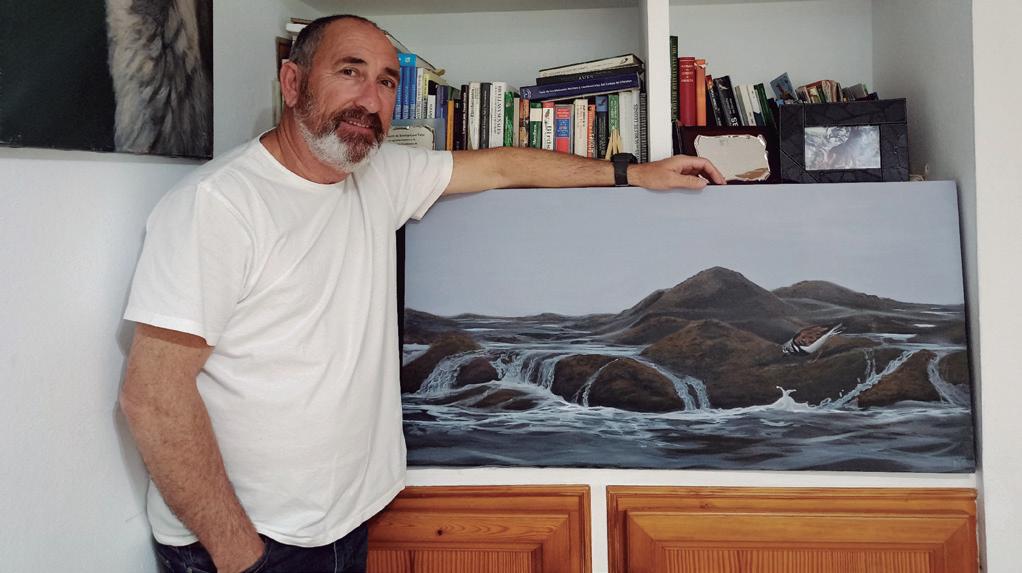
OTWO 09 / APRIL 2020 71 70 OTWO 09 / APRIL 2020
CHAPTER FIVE / CAPÍTULO CINCO
THE VALLE DE OJÉN ROADWAY
La Calzada del Valle de Ojén
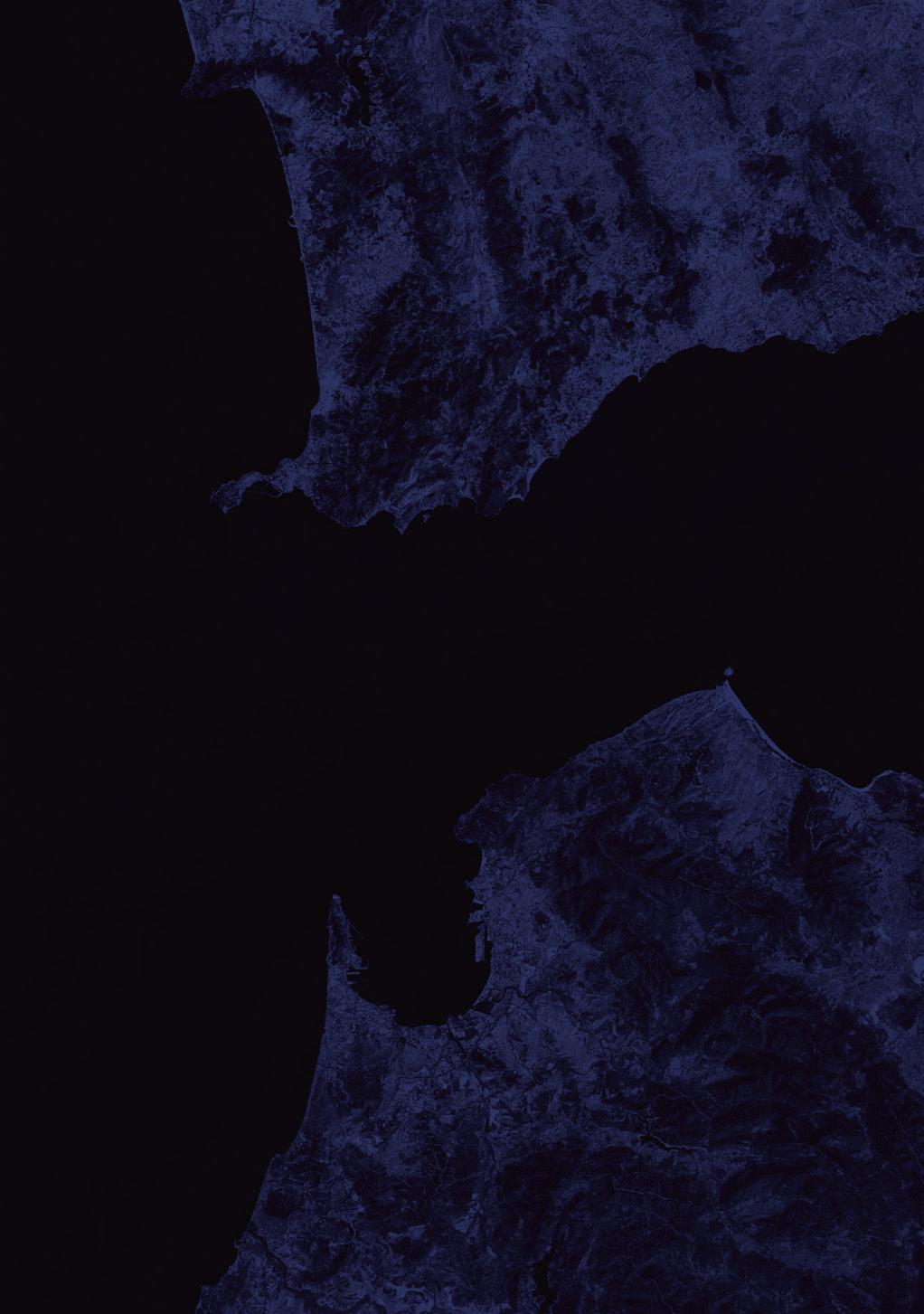
Juanlu González
Article and images

72
The exact layout of the Malaca-Gades route (Antonine Itinerary VI), which previously passed through the Los Alcornocales Natural Park, has always been the subject of much discussion. Initially, it was thought that the route had been placed near the coast, despite it having to traverse a complicated orography via the ports of Bujeo and El Cabrito, located between Algeciras and Tarifa. However, that route seemed the most plausible, by extension perhaps of the existing communications map and the location of a small cluster of Roman coastal cities between Carteia and Baelo that are cited in Antonine’s geography, in the 3rd century A.D.
However, research using recent discoveries and geographic information systems, rejected this possibility, with the discovery of an interior main road, that branches out towards each coastal town, where, as expected, Roman ‘mansio’ were found stood at each crossing. However, this theory meant that the route in Los Alcornocales ran through a legendary and intricate mountain path known as La Trocha, a path that is well known to hiking fans in the region of the Campo de Gibraltar.
Nevertheless, it is hard to believe that the important Malaca-Gades route was little more than a path of goats. Due to the obstacles that would have had to have been overcome, the route would only have been suitable for cavalry or pedestrians, not for carts or similar vehicles. The term ‘trocha’ itself indicates that it is a shortcut, an alternative to a main road.
The end of La Trocha flowed into the Ojén Valley towards the direction of Facinas, crossing the outskirts of the Visigoth and Andalusian tower of La Torrejosa, before heading towards the plains of La Janda and Vejer de la Frontera. The crossing point between the Antonine Itinerary VI route and the current road to Facinas was in the immediate vicinity of the Venta de Ojén, from which it then branched off towards the Roman city of Mellaria, located near the inlet of Valdevaqueros. According to the Roman road system, a ‘mansio’ would have been established at the junction as a rest point for travellers and their horses. And as expected, we have been able to verify that the old rural house located next to the Venta de Ojén, has Roman stone ashlars dispersed along the lower part of the exterior walls of the cortijo.
There is no doubt that from the Venta de Ojen,
the route would have continued towards La Torrejosa, over the Hill of Almodóvar and in the direction of Facinas. The ancient toponymy of the area clearly reflects and alludes to the word ‘calzada’ (road), making it clear that this was indeed an ancient path. The only remaining question is how to reach Portus Albus from this point, which is located near the estuary of the Palmones River.
As previously noted, La Trocha does not seem to be the most appropriate route for crossing the mountain range to Venta de Ojén. However, only 5 km north of the proposed alternative there is a natural passage with hardly any inclines that links with the town of Facinas. Proof of this is the fact that it is used as a cattle route that runs parallel to a permanent stream, flanked by several springs, providing walkers and their horses with precious and essential water.
This alternative route would not change the distance in roman miles between the cities described in Antonine’s work, however none of the proposed routes can accurately be measured against original maps without some margin of error. But this suggestion of an alternative route is not an original one. Researcher, Gonzalo Arias, editor of “The Extravagant Milestone”, a magazine specialising in Roman routes and roads, resolutely wagered on this alternative route and visited the area accompanied by forest rangers to look for ground evidence to support his theory. In the 1980s, we had the opportunity to repeat the visit and to see some of the connecting points between the Los Barrios-Facinas road (which is today a forest track) and the Roman road set within the boundaries of San Carlos del Tiradero and the Finca of Ojén.
As it happens, there are no toponymic references to Roman roads on the Tarifa side, but the evocative “Soto de Roma” name can be found at a nearby farmhouse within the proposed alternative area. There is also material evidence of Roman remains close to the Puente de Hierro where the Arroyo de Ojén and the Palmones river meet, that indicate a settlement of certain significance. The Cortijo de Ojén itself shows signs that in the past it could also have been a Roman villa.
But it is not only the layout that marks the existence of an important communications route in the valley. Thanks to the efforts of people who lived in

74 OTWO 09 / APRIL 2020
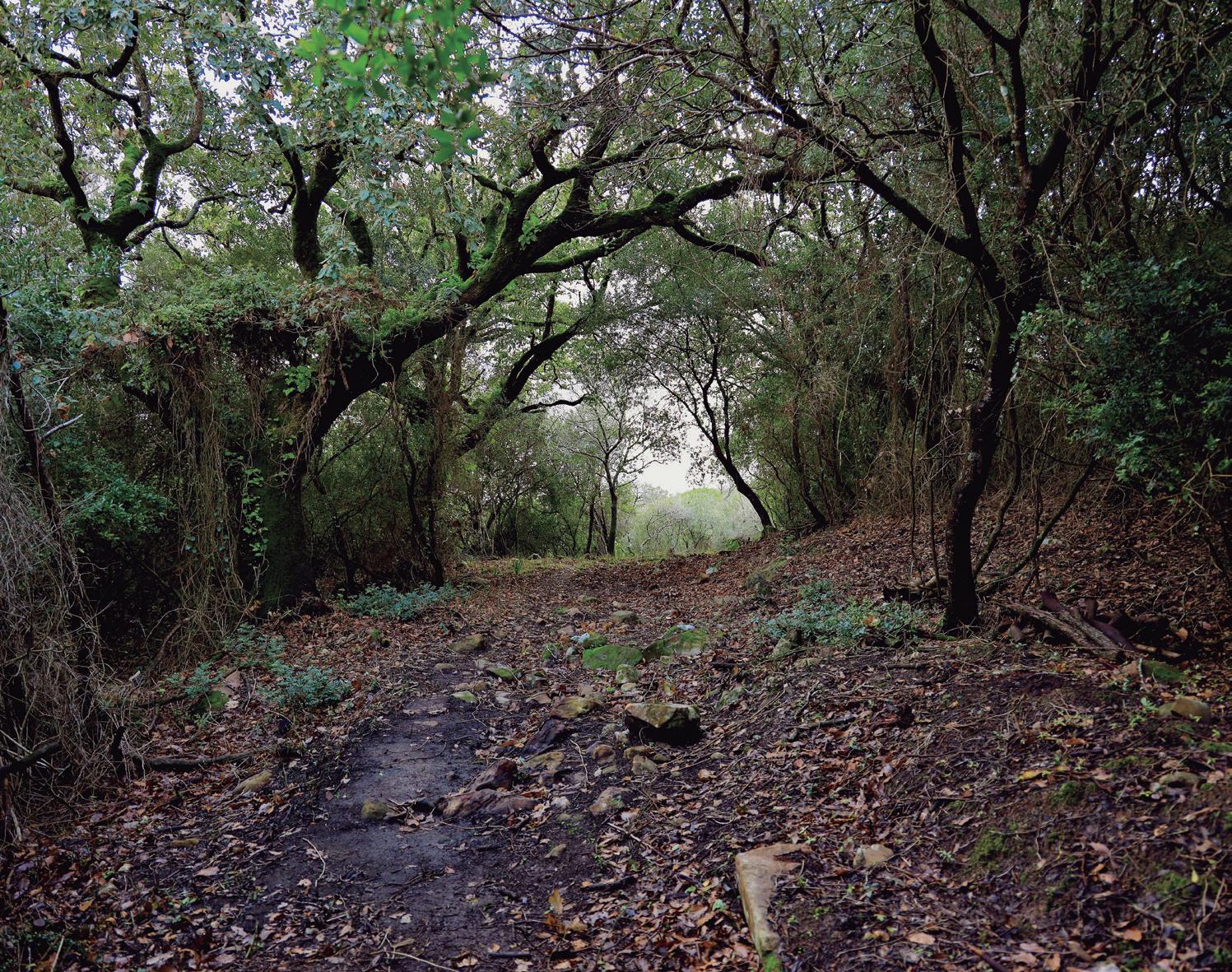
the area decades ago, such as rangers, technicians and forest workers, it has been possible to discover, and to clear the entire two and a half kilometre stretch of road that runs through the public mountain of San Carlos del Tiradero, in the municipality from Los Barrios.
Despite the time that has elapsed since the path fell into disuse (the currently used roadway was completed by the prisoners of the Spanish Civil War in 1944) the tree vegetation has barely consumed the pathway. It is still possible to see how some of the ditches were dug out or how rocks were carefully piled on both sides of the road to allow passage. When visitors see the newly discovered route, many people wonder where the original cobblestones are or whether they even existed.
Obviously after several centuries of continued use, it would be ridiculous to expect to find the path in its original constructed state. We are not referring to a major route like the Appian Way, we are referring to a much smaller path in Hispania Baetica. However, you can still see remnants of cobblestones that have been removed in some areas. This is especially clear when the road passes through areas of clay and waterlogging. It is in places like this that you can understand the true meaning of the word roadway, since the only way to find the old pathway is to precisely follow the linear route that passes the piles of moved rock, revealing the efforts that were made to ensure that the route was accessible, even during the winter.
Looking at the cartography, some curious references can be found. At the end of the 19th century, this route was already known as “Camino Viejo de Tarifa”, which indicated that it was probably not used much and that it was already very old. But it is possible to go even further back. During the Middle Ages it was named Ruta de los Benimerines and it was one of the most important roads in the province.
It is not difficult to then infer that a cattle route and a natural path of this scale, must also have been significant in earlier periods of times. Many of us intend and hope that in the future these routes are still valued and used as a dynamic element of ecotourism in the Valle de Ojen.
76 OTWO 09 / APRIL 2020 OTWO 09 / APRIL 2020 77

El trazado exacto de la ruta Malaca-Gades, el Itinerario VI de Antonino, a su paso por el Parque Natural Los Alcornocales, siempre ha sido objeto de discusión. Inicialmente se apostó por situarla cerca de la zona costera, a pesar de tener que atravesar una complicada orografía, los puertos del Bujeo y el Cabrito, situados entre Algeciras y Tarifa. Sin embargo, ese trayecto parecía el más plausible, por extensión quizá del mapa de comunicaciones actual y por la existencia, entre Carteia y Baelo, de un rosario de pequeñas ciudades romanas costeras citadas en la geografía de Antonino, original del siglo III d. C. No obstante, recientes investigaciones usando los más recientes descubrimientos y sistemas de información geográfica, rechazaron esta posibilidad, estableciendo un viario principal interior, desde el que salían ramales hacia cada villa costera, en cuyos cruces se situaba invariablemente una mansio. Sin embargo, esta teoría hacia discurrir a la ruta en Los Alcornocales por una mítica e intrincada vereda de montaña, conocida con el nombre de La Trocha, muy conocida por los aficionados al senderismo en la comarca campogibraltareña.
Sin embargo, cuesta creer que la importante vía Malaca-Gades fuese poco mas que una vereda de cabras. A tenor de los obstáculos que tendría que salvar, solo sería apta para caballerías o peatones, jamás para carros o vehículos similares. El propio término trocha, indica que es un atajo, una variante de un camino principal, como sabiamente indica el conocido refranero popular. La Trocha finalmente desembocaba en el Valle de Ojén y tomaba dirección Facinas, atravesando los alrededores de la torre visigoda y andalusí de La Torrejosa, hasta encaminarse a las llanuras de La Janda y Vejer de la Frontera. El
punto de contacto entre el itinerario VI de Antonino y la actual carretera de Facinas se producía en las inmediaciones de la Venta de Ojén, desde la que salía un ramal hacia la ciudad romana de Mellaria, ubicada cerca de la ensenada de Valdevaqueros. Como corresponde en el sistema viario romano, en el cruce se establecería una mansio para dar servicio a los viajeros y sus caballerías. Y efectivamente, hemos podido comprobar que la antigua vivienda rural situada junto a la Venta de Ojén, posee sillares de piedra de factura romana repartidos por la zona inferior de los lienzos exteriores del cortijo. No cabe ninguna duda que, a partir de la venta, el itinerario continuaba hacia La Torrejosa, sobre el Cerro de Almodóvar, en dirección a Facinas. La antigua toponimia de la zona refleja varios nombres alusivos a la denominación calzada, que dejan bien claro a qué nos referimos. La única duda que resta es cómo se llega desde ese punto hasta Portus Albus, situado cerca de la desembocadura del río Palmones.
Como apuntaba anteriormente, La Trocha no parece la opción más adecuada para atravesar la sierra hasta la Venta de Ojén. Sin embargo, sólo unos 5 km al norte a la alternativa propuesta existe un paso natural que comunica con Facinas sin apenas desnivel, como lo prueba el hecho de que se trata de una vía pecuaria que discurre paralela a un curso de agua permanente, flanqueada por varias fuentes que proveerían al caminante y a sus caballerías del preciado y necesario líquido elemento.
Esta alternativa apenas si añadiría distorsión a las distancias expresadas en millas romanas entre las ciudades de la obra de Antonino, cosa que ninguno de los caminos propuestos consigue cuadrar sin cierto margen de error. Pero nuestra opción no

es una propuesta original. Ya el polifacético investigador Gonzalo Arias, editor de la revista “El Miliario Extravagante”, especializada en calzadas y caminos romanos, apostó decididamente por esa alternativa y visitó el área para buscar evidencias sobre el terreno que apoyasen su tesis acompañado por agentes forestales con los que tuvimos ocasión, en los años 80 del pasado siglo, de repetir la visita y visitar algún encuentro entre la carretera de Los Barrios-Facinas — hoy pista forestal— con la calzada romana entre los limites de San Carlos del Tiradero y la finca de Ojén. Es cierto que no abundan referencias toponímicas a calzadas romanas como sucede hacia el lado tarifeño, pero sí que encontramos la evocadora denominación “Soto de Roma” en un cortijo de las inmediaciones dentro de la alternativa que proponemos. También hay evidencias materiales de restos romanos que denotaban asentamientos de cierta enjundia en las inmediaciones del encuentro del Arroyo de Ojén con el río Palmones, cerca del Puente de Hierro. El propio Cortijo de Ojén presenta señales de que en el pasado también pudo ser una villa romana. Pero no es sino el propio trazado el que marca la existencia de una importante vía de comunicación en el valle. Gracias a los esfuerzos de personas que vivieron en la zona decenios atrás, a agentes, técnicos y trabajadores forestales, se ha logrado descubrir y despejar todo el tramo de la calzada que discurre por el monte público de San Carlos del Tiradero, en el término municipal de Los Barrios, alrededor de dos kilómetros y medio. A pesar del tiempo transcurrido desde que el camino cayó en desuso —la actual carretera se terminó de construir por los presos de la Guerra Civil española en 1944—, prácticamente la vegetación arbórea apenas si ha colonizado la traza de la vía. Aún
es posible ver cómo se rebajaron algunas trincheras o se acumularon cuidadosamente rocas a ambos lados de la vía para facilitar el tránsito. Tras la visita a la parte descubierta, muchos se preguntan dónde está el empedrado originario o incluso si este existió alguna vez. Obviamente, tras muchos siglos de uso continuado, pretender hallar hoy el estado inicial de cuando se construyó es absurdo. Tampoco estaríamos hablando de la Via Apia sino de un camino de bastante menor importancia allá en la Bética. Sin embargo, sí que se aprecian restos de empedrado removido en algunos segmentos. Este hecho es especialmente nítido cuando la calzada atraviesa una zona de bujeo arcilloso y encharcable. Es ahí donde la palabra calzada toma todo su verdadero sentido, ya que la única manera de encontrar la antigua traza es justamente seguir el acúmulo lineal de piedras que desvela los esfuerzos realizados por asegurar la transitabilidad del itinerario aún en época de invierno.
Si nos atenemos a la cartografía es posible encontrar algunas referencias curiosas. A finales del S. XIX, a esta vía ya se la conocía como “Camino Viejo de Tarifa”, lo que indicaba que probablemente no fuera el mas usado y que tenía ya sus años de antigüedad. Pero todavía es posible ir mucho más atrás. Durante el medievo tuvo el nombre de Ruta de los Benimerines y se mostró como uno de los caminos más importantes de la provincia.
No es complicado, pues, inferir que una ruta pecuaria, un paso natural de esta magnitud, también tuvo que tener esa misma relevancia durante épocas anteriores, como muchos ahora pretendemos que lo tenga también en el futuro, tras su puesta en valor al servicio de la recuperación de todo el Valle de Ojén como elemento dinamizador del ecoturismo en la comarca.
OTWO 09 / APRIL 2020 79 78 OTWO 09 / APRIL 2020
El artesano sevillano

Manuel Campos, a Sevillian artist within everyone’s reach
Un artista sevillano al alcance de todos
Ana Villalta:Text / Photographs

The craftsman ensures that we have retro styled and versatile pieces in our wardrobes, as well as special decorative items made exclusively for you.
Where possible, newspapers, supermarket brochures and colour printed press can continue being useful, attractive and even a part of our most basic clothing needs. For this, the skills of Sevillian craftsman Manuel Campos are always there to make it happen.
On the second Sunday of March, we met Manuel at his usual spot in the Seville Alameda de Hércules market, where beyond the original pieces he is known for through his Facebook page, we discovered his passion for his daily work - giving a second life to paper used for mass media.
His skills are revealed through his handiwork. His confidence demonstrates how he tears the paper strip by strip, matching each colour into colour groups, weaving truly special handbags for a special family occasion, for a celebration or for that particu-
OTWO 09 / APRIL 2020 81 80 OTWO 09 / APRIL 2020
Craftsman from Seville, Manuel Campo, with some of his work in the Alameda de Hércules.
Manuel Campo con alguno de sus trabajos en la Alameda de Hércules.
lar moment where you want your look to be complemented by a unique touch, all thanks to his creative tenacity.
Campos tells us why we should not be worried about using his creations, “each and every one of the pieces I make with paper have a waterproofing treatment that protects and maintains them,” says the craftsman.
Those strolling through the market stopped dead in front of Manuel’s stall as they found the perfect hat or cap - each made in different sizes – then continued on their way to continue discovering Seville’s many nooks and crannies without fearing the unusual heat of these pre-spring days.
But it doesn’t end with just enjoying a new purse, a headdress or a wallet that complements your wardrobe, Manuel has also found a way to bring new life to books that are incomplete or defective. Whether a commissioned item or one from his own inspiration he uses no shortcuts and moulds the pages just as someone would mould a piece of clay. He is able to print that special someone’s name or a significant date on the edge of the pages or create an object that becomes a unique decorative focal point of any room.
And once you buy your merchandise, the carrier bags are also manufactured by Manuel, sparing no detail when it comes to his final product and its ecological footprint.
Surely, for OTWO readers, the work of this paper craftsman is not only attractive because of his skills, but also for the contribution each of his creations makes towards caring for nature. No machines are used that cause disruptive noise. No materials are used that tarnish our environment. No dyes or toxic products. Just recycling, paper, abandoned books and ... a lot of love for art. An Art with a capital A that allows Manuel Campos to be part of the Alameda de Hércules Artisan Market every second Sunday of the month and the remainder in the Triana Market. So, if you go to Seville, spare a little time with him, it is worth it to see his aptitude, his work and for his conversation. If Seville is a bit too far away, you can get to know him through his Facebook page: artesanía en papel de periódico (newspaper crafts). Another great contribution to maintaining our environment, crafted with great care.
Manuel Campos does not leave a single detail when recycling and upcycling. His bags for his products are also made with newspaper.
Manuel Campos no deja un detalle fuera del reciclaje y sus bolsas para sus productos también las realiza con papel de periódico.


OTWO 09 / APRIL 2020 83 82 OTWO 09 / APRIL 2020
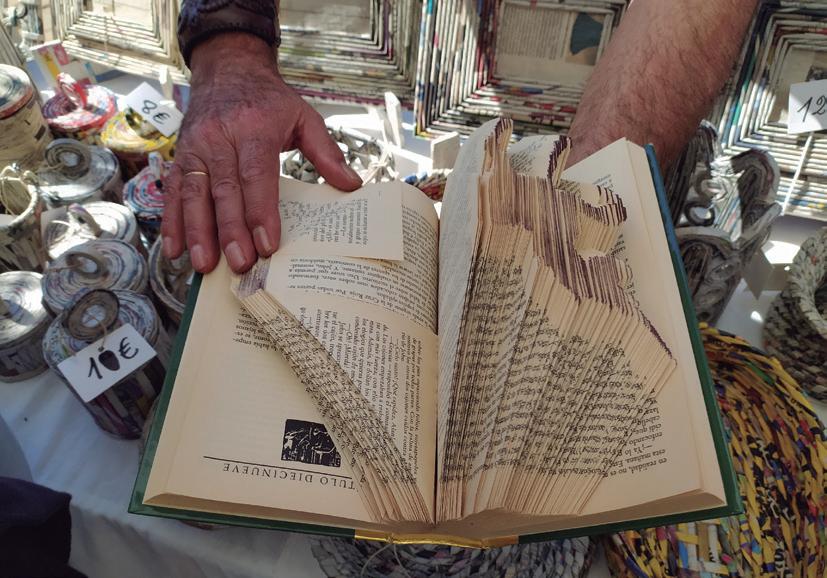
Manuel Campos shows us how without cutting a single page, he reuses discontinued copies for original and unique decoration on request.
Manuel Campos nos muestra como sin cortar una sola página reutiliza ejemplares descatalogados para decoración original y única por encargo.


Manuel Campos works by order, names of up to seven letters on the pages of his books.
Manuel Campos trabaja por encargo nombres de hasta siete letras en las páginas de sus libros.

 Folded pages for unique book decoration effects.
Páginas dobladas para conseguir efectos únicos en decoración con libros.
Decorative models in books by Manuel Campos, paper craftsman. Modelos de decoración en libros de Manuel Campos, artesano del papel.
Folded pages for unique book decoration effects.
Páginas dobladas para conseguir efectos únicos en decoración con libros.
Decorative models in books by Manuel Campos, paper craftsman. Modelos de decoración en libros de Manuel Campos, artesano del papel.
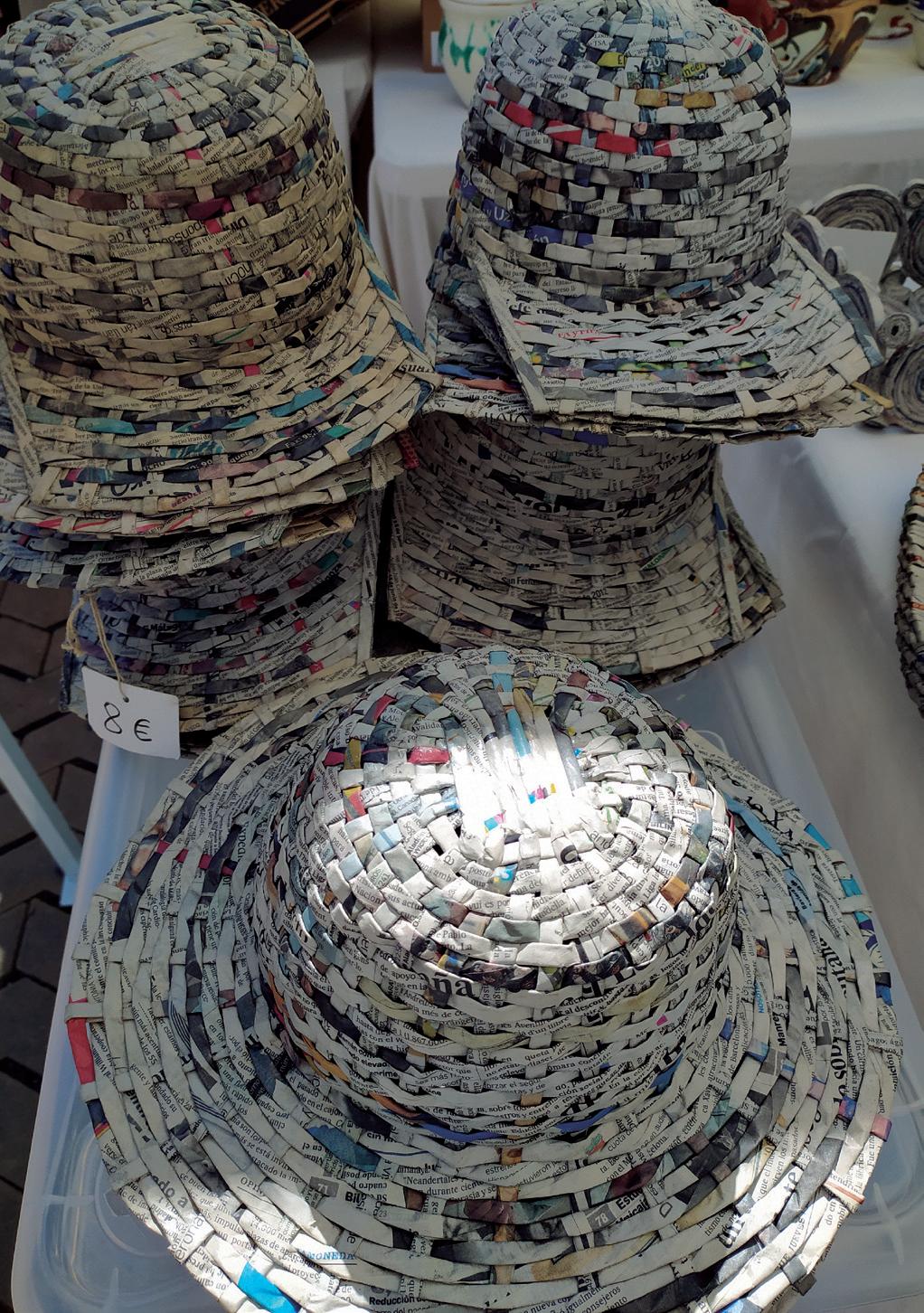

El artesano igual consigue que tengamos en nuestro fondo de armario una pieza versátil de aspecto retro, que un especial artículo decorativo realizado en exclusiva para ti.
Cuando el papel de periódico, los folletos de los supermercados y la prensa en color tienen una posibilidad de seguir siendo útiles, atractivos y parte de nuestra indumentaria más elemental, ahí están las manos del artesano sevillano Manuel Campos para hacerlo realidad.
El segundo domingo de marzo, nos encontramos con Manuel en su habitual ubicación del mercado de la Alameda de Hércules sevillana, donde más allá de la originalidad de sus piezas conocidas a través de su página Facebook, descubrimos su pasión por el trabajo que realiza a diario pensando en dar una segunda vida al papel más mediático.
Sus manos demuestran su habilidad. Su desparpajo nos pone al día de como consigue tira a tira de papel, combinar coloridos por gamas cromática, tejer carteras especiales para una reunión familiar, una ceremonia o ese momento en el que quieres que tu look se complemente con un detalle diferente, y lo consigues gracias a su tenacidad creativa.
Campos nos cuenta como no debemos tener miedo a usar sus trabajos, “todas y cada una de las piezas que realizo con papel, llevan un tratamiento de impermeabilización que las protege y mantiene”, afirma el artesano. Los paseantes por el mercado, se paraban en seco ante el puesto de Manuel, al encontrar el sombrero o la gorra perfecta -cada una con su tallaje propio- para poder continuar su camino y continuar descubriendo los rincones sevillanos sin temer al calor impropio de estos días preprimaverales.

Y la cosa no queda en como disfrutar de un bolso, un tocado o una billetera de las que hacen ralla cuando complementa tu vestimenta, si no que Manuel ha encontrado una segunda vida para aquellos libros que se encuentran incompletos o con algún defecto. Bien por encargo, bien por inspiración propia, sin usar un solo corte de tierra y moldeando las páginas como quien moldea un trozo de barro, consigue imprimir en el canto de sus páginas el nombre de una persona especial, una fecha con enjundia o el objeto que represente un detalle que quieres sea el punto de inflexión en la decoración de un rincón especial.
Y para llevarte tu mercancía, sus bolsas son también manufacturadas por él para que no falte detalle ni ecología en su producto final.
Seguro que a los lectores de OTWO, el trabajo de este artesano del papel, le levanta la curiosidad no solo por su destreza, si no por la aportación que cada una de sus creaciones al cuidado de la naturaleza. No hay máquinas que perjudiquen con ruido molesto. No hay materiales que afeen nuestro sistema. No hay tintes ni productos tóxicos. Solo hay reciclaje, papel, libros abandonados en un rincón y… mucho amor al arte. Un Arte con mayúsculas que permite a Manuel Campos formar parte del Mercado de Artesanos de la Alameda de Hércules cada segundo domingo de mes y el resto en el Mercado de Triana. Así que, si pasa por Sevilla, echa un ratito con él, merece la pena su aptitud, su trabajo y su conversación. Si te pilla algo lejos, puedes conocerlo a través de su página de Facebook: artesanía en papel de periódico. Una aportación más a mantener nuestro medio ambiente, hecha con mucho cariño.
OTWO 09 / APRIL 2020 87
Waterproof hats and caps made by the craftsman Manuel Campos in different sizes.
Sombreros y gorras impermeabilizados realizados por el artesano Manuel Campos en distinto tallaje.

89
Some examples of dates and figures requested by clients from Manuel Campos.
Algunos ejemplos de fechas y figuras encargadas por clientes a Manuel Campos.
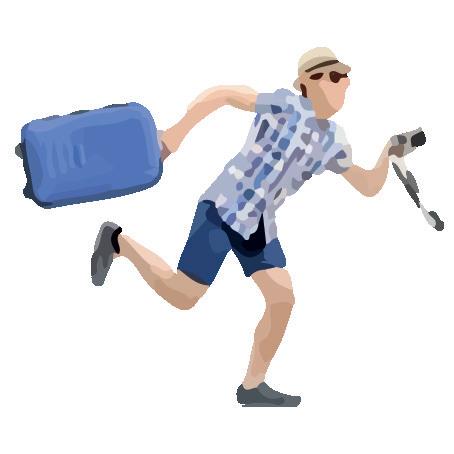
Guía rápida de: Portugal

Language:
Portuguese.
Currency:
Euro.
Capital: Lisbon.
Famous for:

Port Wine. Exploration and Maritime History. Pastéis De Nata.
Some top places:
Visit the captivating and colourful capital Lisbon.
Sip port and wander the historical streets of Porto. Hike Portugal’s highest peaks at Serra da Estrela. Explore the magical town of Sintra. Watch bird migrations at Parque Natural da Ria Formosa.
Marvel at the ancient stone megaliths around Évora. See the UNESCO listed medieval towns of Alcobaça, Batalha & Tomar.
Activities:
Hiking, surfing, swimming, scuba diving, canyoning, golf.

Weather:
High Season (Jul-Aug) Hot weather, busy. Shoulder (Apr–Jun & Sep–Nov) Milder weather, average crowds. Low Season (Dec–Mar) Cooler weather, fewer crowds.
Health/Vaccinations:
Always check with your nearest travel clinic at least 4 to 6 weeks before travel for up to date advice.
Eco fact:
In 2019 over half of Portugals electricity was produced by renewable energy, with the country committed to increasing that figure to 80% by 2030.
Eco resorts:
Budget: Inspira Santa Marta Hotel from £80 per night (Lisbon).
Mid: Noah Surf House from £120 per night (Santa Cruz). Luxury: Areias do Seixo from £250 per night (Povoa de Penafirme).
Idioma:
Portugués.
Moneda:
Euro.
Capital:
Lisboa.
Famosa por:

Vino de Oporto. Exploración y su historia marítima. Pasteles de nata.
Lugares de interés:
Visita la cautivadora y colorida capital de Lisboa. Probar un poco de porto y pasee por las calles históricas de Oporto. Camina por los picos más altos de Portugal en la Serra da Estrela. Explora el pueblo mágico de Sintra. Observe las migraciones de aves en el Parque Natural da Ria Formosa. Maravíllate con los antiguos megalitos de piedra alrededor de Évora. Vea las ciudades medievales catalogadas por la UNESCO de Alcobaça, Batalha y Tomar.
Actividades:
Senderismo, surf, natación, buceo, barranquismo, golf.
Clima:
Temporada alta (julio-agosto) Clima caluroso, tiempo muy popluar de turismo.
Medio (abril – junio y septiembre – noviembre) Clima más templado, menos turismo. Temporada baja (diciembre-marzo) Clima más frío, menos turismo.
Salud / Vacunas:
Consulte siempre con su clínica de viajes más cercana al menos 4 a 6 semanas antes del viaje para obtener consejos actualizados.
Ecología:
En 2019, más de la mitad de la electricidad de Portugal fue producida por energía renovable, y el país se comprometió a aumentar esa cifra al 80% para 2030.
Los mejores resorts ecológicos: Económico: Inspira Santa Marta Hotel desde £80 por noche (Lisboa).
Medio: Noah Surf House desde £120 por noche (Santa Cruz).
Lujo: Areias do Seixo desde £250 por noche (Povoa de Penafirme).
OTWO 09 / APRIL 2020 91 90 OTWO 09 / APRIL 2020


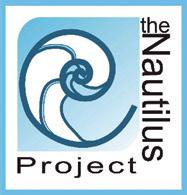
WORLD OCEANS DAY 2020
Gibraltar Sustainable Business Awards
In Collaboration with the Gibraltar Federation of Small Businesses, The Nautilus Project are hosting the 2nd Business Awards for organisations with the greatest number of green initiatives implemented over the past year. The theme is New Decade New Habits with a view of showcasing the different ways in which Gibraltar has reduced its plastic and carbon footprint as a community. Examples may include (but are not limited to):
• Awarded the most TNP certificates since accreditations began.
• Implementation of Energy Saving practices.
• Recycling within the workplace.
• Cutback on single use plastics.
• Reduction in CO2 emissions.

Campion
Strong, smooth and sophisticated.
London Dry Gin distilled in Gibraltar.
The Spirit of the Rock.
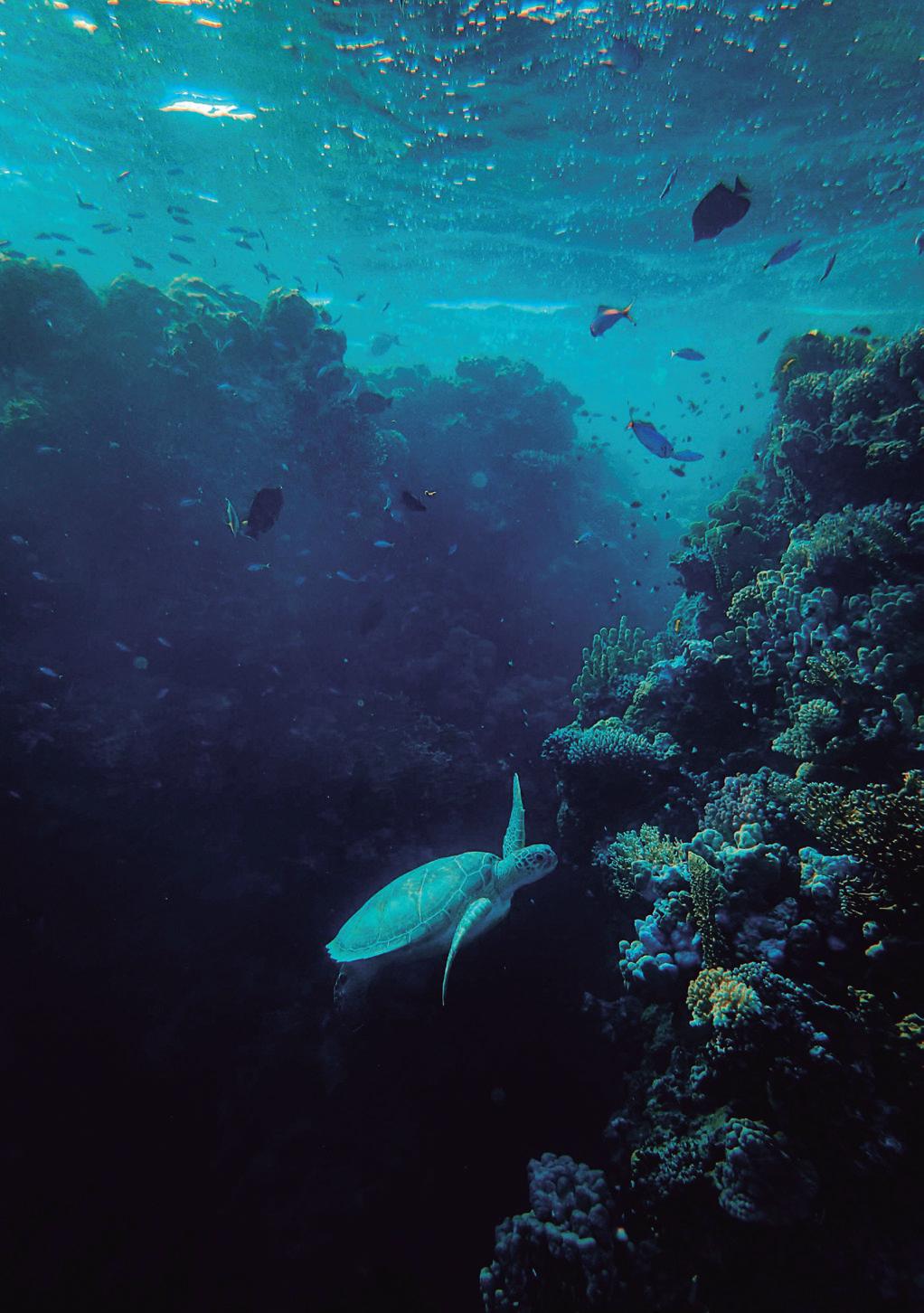
• Sustainability within the workplace.
Power Point presentation entries are to be submitted to info@thenautilusproject.co by no later than Friday 22nd May 2020. Contact Melanie Soiza-Stagnetto for any further information on +350 54002262.


What is Coasteering?
The activity of coasteering involves making you way along the coastline usually along steep cliffs and rocky outcrops. We use a variety of techniques that may include other outdoor activities such as walking, scrambling, climbing, jumping, abseiling (rappelling), and swimming.
Where do we meet?
We meet at the IN2ADVENTURES Sandy Bay Activity centre where we can start our activity enjoying our beautiful beach. We like our clients to use public transport if possible, in order to reduce our carbon footprint. Please get in touch if you need some advice.
What kind of equipment do you provide?
We provide all the technical equipment you will need for this activity; this is routinely inspected and is UIAA approved (Union International de Associaciones Alpinistas). You will be given a wet suit, safety helmet and climbing harness. Before we start, we will give all participants a comprehensive safety brief and how to use the equipment correctly. How fit do I need to be?
An average level of mobility will help you enjoy the day. But this activity is easily tailored to any fitness level.
What is the minimum age that can come coasteering?
We recommend that children should be 9 or over for this activity. Please let us know if any of the participants are weak or non-swimmers. What should I bring?
Old trainers that will get wet. Change of clothes. Towel. Sun Cream. Water.
If you have long hair, please tie it up but remember that you will need to put a helmet on. Avoid loose or dangly bits.
Can I bring my own kit and equipment?
Yes, but it will be inspected by the instructor to make sure it is serviceable and correct.
Morning itinerary:
We meet at the Activity center at 10:00 am. Get changed into wetsuits 10:00 – 10:30 am. Start the route – 10:30 am.
Arrive at the end – 12:30 pm.
Afternoon Itinerary:
We meet at the Activity center at 2:00 pm. Get changed into wetsuits 10:00 – 2:30 pm.
Start the route – 2:30 pm.
Arrive at the end – 4:30 pm.
The standard route is as follows:
Start at the activity center, receive equipment induction and safety briefs. Walk a few hundred meters to the north end of the beach and climb the steps to the old cable platform where the group will abseil into the shoreline.
Follow the shoreline north towards Black Strap cove by scrambling over rocks swimming between pools and generally making progress. Continue north past the cove to ‘Frieda’ (the jump) this is an optional jump for those brave enough to do it. After jumping climb up to the Zip line launch point. Zoom along our amazing 100m line and arrive at the south end of Black Strap Cove. At this point we make our way back to the Activity Centre, depending on time left and prevailing conditions either by wild swimming or walking or a combination of both.
What if the weather is bad?
We can usually continue regardless of the weather, only a really wild storm will stop us! Don’t worry we will let you know if we can go ahead or not. Your safety is our primary concern. Do sessions ever get cancelled?
Whilst every attempt is made to ensure that activities go ahead, we will notify the client of cancellation as soon as practicable where we believe on reasonable grounds that cancellation is necessary due to dangerous and/or unsuitable conditions for the activity. We reserve the right to cancel, reschedule or amend any activity/trip due to safety reasons such as adverse weather or operating conditions. If we cancel your activity you will receive a full refund of any payments made. Our instructors reserve the right to ask clients to leave if they are compromising the safety or enjoyment of the group.
Can I Cancel?
Of course, but an advance non-refundable deposit is required to confirm your booking.

COASTEERING IN GIBRALTAR 96 OTWO 09 / APRIL 2020
¿Qué es Coastering?
La actividad deportiva de Coastering, conlleva aventurarse en un recorrido costero combinando acantilados escarpados y formaciones rocosas. Utilizamos una variedad de técnicas que pueden incluir diversas actividades al aire libre como travesía, escalada, saltos de altura, rápel, natación y buceo.
¿Dónde nos reunimos?
Nos congregamos en el centro de actividad de IN2ADVENTURES Sandy Bay, donde comenzamos nuestra actividad disfrutando de la hermosa playa. Nos complace que nuestros clientes - de ser posibles- utilicen el transporte público, con el fin de reducir nuestra huella de carbono. Contacte con nosotros si necesita consejo sobre ello.
¿Qué tipo de equipo proporcionan?
Facilitamos todo el equipo técnico que necesitará para practicar el coastering. Un instrumental que se inspecciona de forma rutinaria y que está aprobado por la UIAA (Unión Internacional de Asociaciones Alpinistas). Se le suministrará un traje de neopreno, casco de seguridad y arnés de escalada. Antes de empezar, daremos a todos los participantes instrucciones completas de seguridad y de cómo utilizar el equipo correctamente.
¿Qué forma física debo tener?
Un nivel medio de movilidad le ayudará a disfrutar del día. Pero esta actividad se adapta fácilmente a cualquier condición física.
¿Cuál es la edad mínima para practicar coastering?
Recomendamos que los niños hayan cumplido los nueve años o más para esta actividad. Si alguno de los participantes es más enclenque o no sabe nadar, rogamos que nos lo hagan saber.
¿Qué debo llevar?
Viejas zapatillas de deporte, porque se mojarán.
Muda de ropa, toalla, protector solar y agua. Si tiene el pelo largo, por favor recójalo, recordándole que debe llevar casco. No dejar ningún mechón ni prenda que incomode o estorbe.
¿Puedo llevar mi propio equipo?
Sí, pero será inspeccionado por el instructor para asegurarse de que es útil y se encuentra en perfectas condiciones.
Itinerario matutino:
Reunión de participantes en el Centro de Actividades
a las 10:00 am.
Ponerse el traje de neopreno 10:00 – 10:30 am.
Inicio de la ruta – 10:30 am.
Llegada – 12:30 pm.
Itinerario vespertino:
Reunión de participantes en el Centro de Actividades a las 2:00 pm.
Ponerse el traje de neopreno 2:00 – 2:30 pm.
Inicio de la ruta – 2:30 pm.
Llegada– 4:30 pm.
La ruta estándar es la siguiente:
Nos reunimos en el centro de actividades, donde se imparte la información de seguridad sobre el equipo y se le coloca a cada participante. Se inicia la travesía de unos cientos de metros hacia el extremo norte de la playa y subimos las escaleras hacia la antigua plataforma de cable, donde el grupo realizará rápel hasta la costa.
Avanzamos por la costa hacia el norte, dirigiéndonos a la cala Black Strap, escalando sobre rocas, nadando entre piscinas y progresando por la ruta de aventura. Seguimos hacia el norte pasando la cala hasta ‘Frieda’, donde los más valientes podrán realizar un salto de altura.
Después de saltar, subiremos hasta el punto de lanzamiento de la tirolina. Entonces, enfilaremos los cien metros de tirolina hasta llegar al extremo sur de Black Strap Cove.
En este punto volvemos al Centro de Actividades, dependiendo del tiempo que quede y de las condiciones en las que se encuentre el grupo, bien por la natación salvaje o la caminata o por la combinación de ambas.
¿Y si el tiempo es malo?
Por lo general podemos continuar independientemente del clima, ¡sólo una tormenta realmente salvaje nos detendrá! No se preocupes, le avisaremos si podemos seguir adelante o no. Su seguridad es nuestra principal preocupación.
¿Alguna vez se cancelan las sesiones?
Se hace todo lo posible para garantizar que las actividades salgan adelante, aunque notificaremos al cliente la cancelación tan pronto como sea posible, cuando creamos por motivos razonables la necesidad de suspensión debido a condiciones peligrosas y / o inadecuadas para la actividad. Nos reservamos el derecho de cancelar, reprogramar o modificar

cualquier actividad/viaje por razones de seguridad como condiciones climáticas adversas o condiciones de funcionamiento. Si cancelamos su actividad, recibirá un reembolso completo de los pagos realizados.
Nuestros instructores se reservan el derecho de pedir a los clientes que abandonen el grupo, si están comprometiendo la seguridad o el disfrute de los participantes.
¿Puedo cancelar?
Por supuesto, pero se requiere un depósito no reembolsable por adelantado para confirmar su reserva.
COASTEERING EN GIBRALTAR 98 99 OTWO 09 / APRIL 2020 OTWO 09 / APRIL 2020

In this adventure we combine two very different activities with each other. First, the great adrenaline rush of Bridge Jumping off 25 meters. Second, a relaxing route in Kayak through an idyllic place very zen. The adventure will take place in the Embase del Agrio, Aznalcollar, province of Seville.
BRIDGE JUMPING
We arrive at the Madroñalejo Bridge, start with a brief talk about safety and jumping procedures. The bridge height ranges between 18 and 27 meters, depending on the level of the reservoir at that time of the year. We have installed two independent jump lines, so that you can jump simultaneously with your friend or partner, or if you prefer you can jump directly into the water, perfect in Spring and Summer. We have a boat to pick you up after your adventure.
RECOMMENDATIONS:
Sportswear is recommended. If you come with street clothes there is no problem however you would be more comfortable with sportswear, high heeled shoes are not recommended. If you wish to jump in the water we recommend you to bring swimwear and flipflops. In winter you should wear warm clothes, because although it is not normally cold, it could be breezy. Photo / video camera and of course your friends to enjoy this amazing day out with.
KAYAK ROUTE
After arriving at the jetty at the Madroñalejo bridge, and a few brief explanations about safety and paddling techniques, we will sail west along the Cañaveroso River, through a wild landscape where we can observe the riverbank forest, amphibians, fish and with luck some mammals: otters and beavers. The trip lasts 1.5 hours with 6 kilometers, round trip.
RECOMMENDATIONS
£60
Complete pack (per person)
In summer: long-sleeved shirt, swimsuit, cap, sunglasses, sun cream, flip flops and spare clothes and in winter: warm sportswear, cap, sunglasses, sun cream, wet shoes and spare clothes.
REQUIREMENTS:
To be able to do the kayak and bungee jumping activity you must be between 8 and 65 years old, and a maximum weight of 105 kg. For the Kayak route you must know how to swim properly.
It is not recommended for people suffering from hypertension, cardiorespiratory disorders, pregnancy, neurological disorders, epilepsy, bone, joint or ligament problems, dislocations, recent muscle injuries, diabetes, asthma, panic attacks and/or anxiety.
Duration - 3 to 4 hours.
Minimum/Maximum participants - 7/15 participants.
Recommended Dates - Spring, summer and autumn.
Services Included:
Specialized guides and equipment. All technical equipment, First aid kit. RC and Accident Insurance Photo report with video summary.
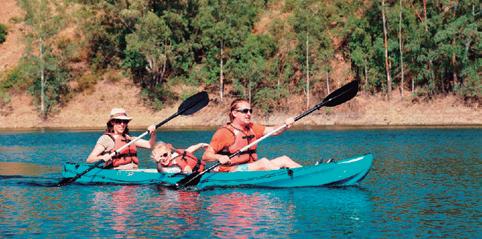
AVENTURA
SALTO
En esta aventura combinamos dos actividades muy diferentes entre sí. Primero, la gran emoción de un gran salto de Puenting de 25 metros y segunda, una ruta en Kayak por un paraje idílico muy relajante. La aventura se realizará en el Embase del Agrio, Aznalcollar, provincia de Sevilla.
SALTO DE PUENTING
Llegaremos al Puente del Madroñalejo y traa una breve charla sobre seguridad y los procedimientos de salto, comenzaremos.
La altura del puente oscila entre 18 y 27 metros, dependiendo del nivel del embalse en ese momento del año. Para el puenting hemos instalado dos líneas de salto independientes, de forma que permite saltar simultáneamente con tu amigo o pareja. A continuación te recogeremos con una barca, o si lo deseas -perfecto en primavera y verano- ¡Te soltamos directamente al agua!
RECOMENDACIONES:
Ropa deportiva. Si vienes con ropa de calle no hay incoveniente alguno. En verano y si deseas no ser recogido por la barca y que te lanzemos al agua, ven provisto de bañador y chanclas.

En invierno deberéis llevar ropa de abrigo, pues aunque normalmente no hace frío, si puede correr algo de viento. No se recomienda el uso de zapatos de tacón.
Cámara de fotos / video y por supuesto a tus amig@s!
RUTA EN KAYAK
Tras llegar al embarcadero en el puente del Madro-
ñalejo, y unas breves explicaciones sobre seguridad y técnicas de remado, navegaremos en dirección oeste por el Río Cañaveroso, a través de un paisaje salvaje donde podremos observar el bosque de ribera, anfibios, peces y con suerte algunos mamíferos: nutrias y castores. La ruta tiene una duración de 1,5 horas con 6 kilómetros, ida y vuela.
RECOMENDACIONES
En verano: camisa de manga larga, bañador, gorra, gafas de sol, crema solar, chanclas y ropa de recambio y en invierno: ropa deportiva abrigada, gorra, gafas de sol, crema solar, zapatos que puedan mojarse y ropa de recambio.
£60
Pack completo (por persona)
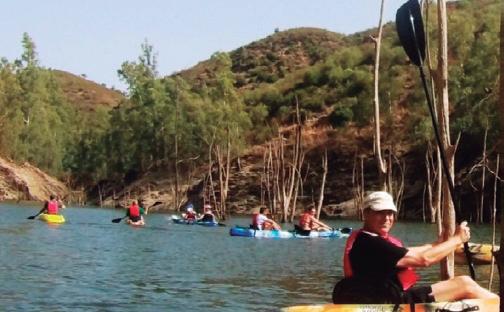
REQUISITOS:
Para poder realizar la actividad de kayak y Puenting debes tener una edad comprendida entre los 8 y 65 años, y un peso máximo de 105 kg, y en el caso del la ruta en Kayak, saber nadar adecuadamente. No se recomienda a personas que sufren de hipertensión, trastornos cardiorespiratorios, embarazo o para mujeres que sospechen que pudieran estarlo, trastornos neurológicos, epilepsia, problemas óseos, articulares o de ligamentos, luxaciones, lesiones musculares recientes, diabetes, asma, ataques de pánico y/o ansiedad.
Duración: De 3 a 4 horas.
Mínimo/Máximo de participantes: 7/15 participantes.
Fechas Recomendadas: Primavera, verano y otoño.
Servicios: Monitores y equipos especializados.
Todo el material técnico, Botiquín primeros auxilios. Seguros RC y Accidentes. Reportaje fotográfico con vídeo resumen
ADVENTURE IN SEVILLE’S NORTHERN MOUNTAINS BRIDGE JUMPING AND KAYAK ROUTES
NORTE DE SEVILLA
EN LA SIERRA
101 100
DE PUENTING Y RUTA EN KAYAK
OTWO 09 / APRIL 2020 OTWO 09 / APRIL 2020
EBIKES DAILY ROCK TOURS. Gibraltar
Enjoy breath taking views across 3 countries and 2 continents, explore Gibraltar’s fascinating history and be introduced to our most famous inhabitants, the Barbary macaques – the only free roaming monkeys in Europe!
Highlights:
Europa Point and Lighthouse, Upper Rock Nature Reserve, Pillars of Hercules Monument, Windsor Suspension Bridge, O’Hara’s Battery (top of Rock 424m), kywalk, Ape’s Den, Great Siege Tunnels, Moorish Castle...and many more.
What’s included?
Premium e-bike by Riese&Müller. Cycle helmet. Safety instructions. Entrance fee into the Nature Reserve. An official tour guide. Bottled water.
Duration:
3 hours. Suitable for everyone over 155 cm, over 12 years old and capable of riding a bicycle.
EBIKES GROUP TOURS. GIBRALTAR
Disfrute de las impresionantes vistas de 3 países y 2 continentes, explore la fascinante historia de Gibraltar y conozca a nuestros habitantes más famosos, los macacos de Berbería, ¡los únicos monos que se desplazan libremente en Europa!
Puntos destacados:
Punta de Europa y el Faro, Reserva Natural Upper Rock (Parte superior del peñon), Monumento de las Columnas de Hércules, Puente colgante de Windsor, Bateria de O’Hara (parte superior del peñon - 424m), El Skywalk, Guarida de los monos, Gran túneles de asedio, Castillo Arabé. …y muchos más ¿Qué está incluido?
Alta calidad E-bike de Riese&Müller. Casco de bicicleta. Instrucciónes de seguridad. Entrada a la reserva natural. Guía oficial. Agua embotellada.
Duración:
3 horas. Adecuadas para todos los que midan más de 155 cm, tengan más de 12 años de edad y puedan montar en bicicleta.

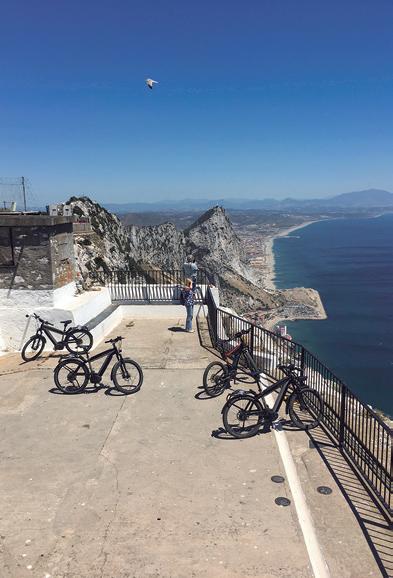
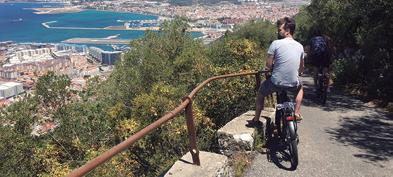
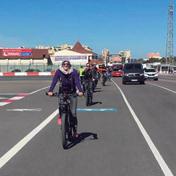

£69 per person (por persona)

STAND UP PADDLE LESSONS GIBRALTAR
Stand up paddle boarding is such a fun activity to do with your friends and family, it’s a perfect way to see the rugged side of Gibraltar. This is a popular activity and you don’t require any previous boarding or canoeing experience to pick it up! Join us for a beginner SUP session to learn the basics from kneeling and to finally stand up paddle boarding. Once you have completed this session, you will be able to join in on more advanced SUP adventures such as the Sunset and the SUP Safari around the stunning southerly coastline of Gibraltar. This session is for people who are keen to develop paddling skills, learn the correct techniques and keep safe on the water.
Duration : 2hrs
What’s included?
Brief induction on safety skills. All SUP equipment required.
Paddle Board rental for 2rs.
Fully Qualified instructor.
SUP Certificate from the British SUP Association An experience you will never forget!
Ages 8-14 will obtain the “Born to Ride” Certification
Ages 14+ will obtain the “Ready to Ride” Certification. All must be confident swimmers.
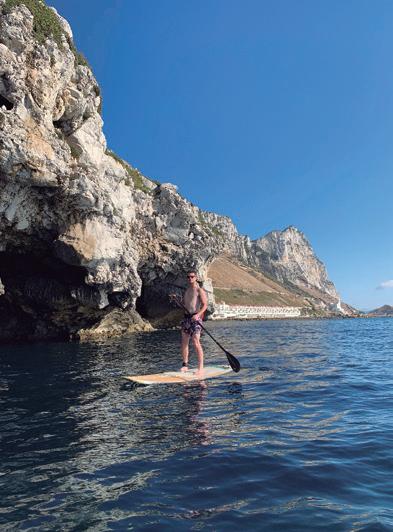


El stand up paddle board es una actividad muy divertida para disfrutar con tus amigos y familiares, es una manera perfecta de ver el lado escarpado de Gibraltar.
¡Esta es una actividad popular y no necesita experiencia previa en boarding o canotaje para recogerla! Únase a nosotros para una sesión de SUP para principiantes y aprender los conceptos básicos de arrodillarse y finalmente pararse en el paddle surf. Una vez que hayas completado esta sesión, podrás unirte a aventuras de SUP más avanzadas, como el Sunset y el Safari de SUP en la impresionante costa sur de Gibraltar.
Esta sesión es para personas que desean desarrollar habilidades para remar, aprender las técnicas correctas y mantenerse a salvo en el agua.
Duración: 2 horas.
¿Qué está incluido?
Breve inducción sobre habilidades de seguridad. Se requiere todo el equipo de SUP.
Alquiler de Paddle Board por 2 horas.
Instructor totalmente calificado.
Certificado SUP de la Asociación Británica de SUP
¡Una experiencia que nunca olvidaras!
De 8 a 14 años obtendrán la certificación “Born to Ride”
Los mayores de 14 años obtendrán la certificación “Listo para surf”
Todos deben ser nadadores seguros
LECCIONES DE STAND UP PADDLE GIBRALTAR
102 103 Reserveonlineonthedayofyourtour andusePromocode:OTWO10togeta10%discount! (subjecttoavailability) ReservaonlineeneldíadeturecorridoyusarelPromocodeOTWO10 paraundescuentodel10%(sujetoadisponibilidad) www.ebike-gibraltar.com £40 per person (por persona) OTWO 08 / APRIL 2020
































































































































